Mitsubishi Triton review and buyer’s guide
The Triton is a 4x4 ute that offers excellent value, benchmark towing capacity and off-road capability that puts more expensive utes to shame. Here’s what you need to know about Mitsubishi’s tougher, smarter, comfier pick-up.
The Mitsubishi Triton is the best-value 4X4 dual-cab ute on sale in Australia because it can do all of the same off-roading, load-carrying and family holiday touring as any other ute - but at significantly less cost.
If you run a small trade-related business, or perhaps you just need a work or off-road vehicle that doubles as family transport, then shopping for a new ute today must include the Mitsubishi Triton.
But just because it’s new, doesn’t mean it’s comprehensively improved in every single aspect. So in this report, we’ll address both the good (which is 90 per cent of the vehicle) and highlight two key drawbacks that might (or might not) be a deal-breaker for you.
Triton is such a compelling vehicle made even better thanks to improved fundamental design, better driving dynamics and increased mobile-office ergonomics. The words “improved” and “better” don’t just relate to its predecessor, but also to its rivals like Ranger, Hilux, D-Max and BT-50, in many respects.
The prospect of buying a new ute or family adventuring four-wheel-drive is a significant investment, both in terms of fronting up the cash, and deciding when to make the commitment. Making a mistake when buying a ute is not just expensive, but time consuming and stressful.
Not only is the new Triton finally here, but it means the wagon-bodied Pajero Sport dizygotic twin-under-the-skin is also just over the horizon.
This Triton is not just new in size, looks and brawn, there’s mechanical change under the bonnet that will make it a smooth, grunty towing platform in ways its predecessor was not.
Mitsubishi Australia is filling its dealerships with new Triton stock and now that it has been launched in locally, you can start to make up your mind about getting one.
You can download the Mitsubishi Triton brochure & spec sheet here >>.
It’s also nice to see Mitsubishi has been a bit more restrained with the use of chrome on the front grille this time around. That’s a good sign of a car company learning from past transgressions.
FEATURES & PRICING
A couple of quick points here. There is only one powertrain, the 2.4-litre bi-turbo four-cylinder diesel, and there’s only one transmission choice for now. That’s right, the manual is coming later in 2024, which will probably annoy the off-roading enthusiasts.
Here’s what equipment you get in Triton 4X4 dual-cab trim with the tubed tray body style, which includes some impressive items rarely (if ever) seen before on such an affordable work ute:
GLX | $51,300 | 4X4 dual-cab
‘Easy Select’ 4WD (4x4 models), with 2H, 4H and 4L
17-inch wheels & tyre pressure monitoring system
Ignition stop-start & keyless entry
Centre & driver’s knee airbags
Adaptive cruise control (ACC)
Parking sensors – front and rear
Cross-traffic alert (front & rear)
Vinyl floor & cloth seat
USB-A + USB-C front & rear, wireless charging (w/active cooling)
9-inch touchscreen + wireless Apple CarPlay; cabled Android Auto
GLX+ | $53,000 | 4X4 dual-cab
GLX-R | $56,500 | 4X4 dual-cab
Rear differential lock & (optional) heavy duty rear suspension,
Front fog lamp + LED centre break light
Rear auto emergency braking
360 degree camera
DAB radio
GLS | $61,000+ approx. | 4X4 dual-cab
Super Select 4WD II with 2H, 4H, 4HLc and 4LLc
Standard duty rear suspension
18-inch alloy wheels
Tray bed liner
Heated, electrically-adjusted door mirrors
LED headlights, indicators, front fog lamps, taillights
$1500 leather pack: Leather w/ silver stitching, power driver’s seat adjustment, heated front seats
GSR | $66,000 approx. | 4X4 dual-cab
black 18-inch alloys
black tray styling bar, roof rails, wheelarch flares & front grille
leather seats with orange stitching
GSR floor mats w/ ‘Triton’ lettering
Soft-touch interior trim + ‘Dark Titanium’ accents
Dual dash-mounted cupholders
Power driver’s seat adjustment
GLS and GSR now come with the choice of a sub one-tonne payload variant for novated leasing customers.
An array substantial accessory packs is available on Triton GLX+, GLX-R GLS and GSR (incl. GSR ‘Special Edition’) model grades. This includes:
Roll-top tonneau (manually operated)
Tow bar kit: tow bar receiver, tongue, wiring harness, 7-pin flat plug, 50mm tow ball, black tow ball cover and a Mitsubishi-branded storage bag
Electric brake controller
Dust & water ‘Defence’ kit (To reduce water and dust ingress via the tailgate into the tray)
Cargo tie-down kit: four fixation rails and six adjustable eyes
Black ‘MITSUBISHI’ grille emblem
Adding the Accessory Pack on Triton GSR is $68,990 driveaway or you can opt for the electric roll top tonneau Accessory Pack for $69,990 driveaway. Individually, the manual tonneau pack costs roughly $4000 and the electric tonneau is about $7800 (which is a lot), on top of the regular price of the vehicle.
GSR Special Edition | $65,300 | 4X4 dual-cab
The GSR Special Edition now gets an enhanced adaptive cruise control system which remains engaged until the vehicle is stationary, where the older system deactivated at roughly 25km/h. This new system has a ‘full-stop’ function.
You also get a ‘Graphite Grey’ grille with embossed Mitsubishi lettering, a black sports bar and body-colour wheelarches.
There’s a $20,000 gulf between the poverty pack GLX two-wheel drive and the trophy truck GSR, and between them are essentially two variants with different features included on the GLX.
Just like old Triton, the Super Select II transmission is available from the GLS at $60,000 where you get the centre differential lock and that clever drivetrain that allows you to run around on high-traction surfaces where things might be sketchy underfoot.
Considering these economically inflated, monetarily tight times where groceries get smaller in volume but go up in price - you pay more to get less, essentially - Triton is a good thing to see. Mitsubishi hasn’t gone for some cynical money-grabbing exercise by only offering it on the top-spec GSR. Keep in mind that for Mitsubishi, the cost of designing, making and distributing a new Triton has gone up proportionally as well. So they’ve clearly tried to keep Triton as sharply priced and well-packaged as possible.
On balance however, the GSR does look like a bit of a styling pack unlike the old GSR Triton where you got the rolltop tonneau cover, heated leather seats with powered adjustment and the 360 camera. GSR basically gives you black plastic bits, and sexier carpet. Happily there are several changes on this all-new model that do supersede the old one.
Adaptive cruise control is finally standard across the whole damn range. So anybody who needs to do lots of kays, every day, from sparrow’s fart to pulling up in the dark, you at least have radar cruise keeping you at a fixed distance to the muppets up ahead all bustling to arrive first to their own crash scene.
If you need to do lots of heavy towing, you’ll need to consider the GLX+ with the heavy duty rear suspension and running on 17-inch wheels and higher profile tyres. In this spec, you’ll also get the ‘Easy Select’ 4WD transmission which is more like the more rudimentary systems on the likes of Mazda BT-50 or Toyota Hilux where you’re limited to using it on unsealed roads and slippery conditions where you won’t be subjecting the internals to driveline wind-up.
To summarise here, if you want to take your Triton off-roading, camping, and for general adventure work that might include moderate towing assignments, and is otherwise used for a variety of general driving in all conditions, the GLS is probably going to be the ideal variant with the centre-diff Super Select II transmission and standard suspension with a much greater working safety limit for loading up.
But if this Triton is going to be subject to five or six days of trade-related work, in and out of building sites, maybe as a contractor or fleet vehicle working in remote locations, or constantly pulling a tool trailer as a means of earning a salary and/or running your small business, consider the GLX+ with the basic 4WD and heavy duty springs for maximum load-carrying capacity.
TRANSMISSION & 4WD
Returning in the Triton is the Super Select II 4WD system, which is the Triton’s primary weapon against mediocrity in the 4X4 dual-cab ute market. It offers the same level of on-road 4WD running in conditions as Ford Ranger with its ‘4A’ mode where, if grip is compromised, it makes towing and load-carrying in these scenarios emphatically safer by driving all four wheels, not just the rears.
Happily, the centre limited-slip differential returns, with seven programmed drive modes. Selecting 4H sends 60 per cent of the drive to the rear, 40 to the front (same as Ford Ranger). Triton is able to use two high-range ‘4WD’ modes, one with the centre differential unlocked and allowing full-time four-wheel drive with a 50:50 split front-to-rear (that’s ‘4H’).
This system is unique in the market because unlike the majority that don’t get a centre diff and cannot run in effective AWD in heavy rain on sealed roads, Triton can. Even at speeds up to 100km/h.
Importantly, 4H can also be engaged at speeds below 100km/h, so if the downpour is heavy and sudden, you don’t have to pull over to do it.
The other high-rage mode is ‘4HLc’, which means the centre diff is locked and allows its to splits the drive for serious terrain where grip is significantly compromised.
You can also use 4L for the most difficult terrain.
What’s important here is that using 4HLc you get additional drive mode settings in which the system can run on, including ‘Mud’ and ‘Sand’. The most likely scenario you would use this feature is perhaps on a boggy building site, towing a trailer in dodgy conditions, using a boat ramp, heading to the snow, or camping (where the grassy campgrounds can get wet from overnight mountain dew).
Even just general driving in heavy rain where standing water is present, driving all four wheels makes vehicle emphatically more predictable to drive. Especially in Australia it’s the case where, after a week of hot weather the oil in bitumen roads can separate and become extremely slick when the cool change arrives with showers.
The ‘Super Select 4WD-II’ system remains arguably better than the one in Ford Ranger which uses an electromagnetic transfer case with a clutch pack instead of a centre differential to provide that front and rear drive split.
There’s no clear evidence one or the other is more or less reliable - they’re just different engineering solutions to provide the same driving capability. But you could suggest that a clutch pack is possibly a wear-and-tear item that is subject to earlier replacement than a differential. Like any other clutch pack, it could wear out prematurely from overheating, abuse or poor integration. But there’s no clear signs of this being the case with Ranger.
And it’s possibly a bit too early to tell if the centre diff in Triton is entirely fault-free. Time and sales volume will tell.
Aside form the 4WD system, Triton uses a six-speed epicyclic automatic transmission that remains as smooth-shifting and intuitive to gearchanges under throttle loads while towing and heavy payloads. Even in the previous generation this gearbox was quite slick under harder acceleration such as getting up to speed on freeways.
ENGINE
The supposedly new engine in Triton is still a 2.4-litre diesel four-cylinder, which is more than adequate for the job at hand.
Except it now has more power and gets a sequential twin-turbo arrangement. Not only will this make it more economical, but it will also be responsible for providing a wide band of available low-RPM power.
Australia will only get the one powertrain with this new Triton, which means simplicity in terms of selecting a model and only the one set of parts inventory Mitsubishi needs to hold onshore.
This bi-turbo arrangement emits 9 per cent less CO2 than the old Triton (on the combined emissions cycle test) despite being the same volumetric capacity as the previous engine, while also consuming 10 per cent less fuel (combined cycle test). Only this time it’s making more power with an extra turbo - more power that’s available much sooner.
In fact, it’s making 12 per cent more power, this time producing 150 kilowatts at 1500 RPM instead of 133kW at 3500 revs.
Fuel economy has improved, with Mitsubishi claiming on the combined economy test cycle its 7.7 litres per 100km result is 9 per cent better than a Ranger WIldtrak.
The 2.4 biturbo retains a six-speed automatic transmission across all model grades, from poverty pack 4X2 GLX to GSR 4X4.
Navara started the twin-turbo diesel ute thing, and Ford soon followed with the Ranger. The latter proved to be a highly strung 2-litre bi-turbo powertrain that took years to get under control, but it was problematic nonetheless. The Navara’s biturbo wasn’t terrible, but it was short-lived thanks to the Mercedes X-Class flop.
The unknown factor here is how well Mitsubishi has done the R&D on that bi-turbo setup, which seems to be okay so far at the 9 months mark. We’ll have to wait and see how reliability goes in the longer term as even early buyers wouldn’t be up to the average 15,000km annual distance driven.
Given Mitsubishi’s proven history with reliability in Pajero, the Pajero Sport and Tritons, it’s hard to see this being an issue. (Could be wrong.)
FUNCTIONALITY
Triton is 5.32 metres long (15mm longer than before), it’s 50mm wider at 1.85 metres (excluding the door mirrors) and that means it’s 49mm wider in so-called “interior shoulder room”, which basically means the cabin is wider and more accommodating for bigger drivers than the old Triton/Pajero Sport platform.
When asked what was Mitsubishi’s top priority to fix on Triton from the old model, Owen Thomson, senior manager of product strategy, said:
It’s been both a criticism and an advantage: the width. People would say its (lack of) width is actually a bit of an advantage at times four-wheel driving…
but it’s well-known that the space in the cabin in width, particularly across the rear seats with three adults, that’s the reason we’ve made Triton wider.
A Ranger still has and extra 140mm of wheelbase, 70mm of length and 105mm of width over Triton, meaning the Mitsubishi’s profile remains the more conservative, on a technicality. But the Triton has a tray 90mm (5 per cent) longer than the Ranger (as in, where it actually matters). So there’s that win for real-world carrying capability.
Speaking of the Triton’s tray, Archimedes once said:
Give me a lever long enough and a fulcrum on which to place it, and I shall move the world.
One of the much older Triton’s biggest problems was it attempted to demonstrate this effect by placing its rear axle (the fulcrum) too far forward of the towbar and its own traybed. Add in the fact Triton had a wheelbase of 3000mm exactly, relative to the weight of its body, suffered a rear overhang problem that acted as a big lever that was at risk of failure when resolving heavy payloads or towing heavy trailers.
See below: Red arrow = payload (includes towball download). Yellow arrows + green arrow = improved length b/w tray start and rear axle fulcrum. Blue arrow = wheelbase (countering payload). Red line = lever acted upon by payload
But this new Triton has a much longer wheelbase at 3130mm and despite having a tray that is 35mm longer at 1555mm in total, it now starts further forward of the rear axle, meaning that chassis-leverage problem is effectively resolved. This improvement is also made by the increase in overall width. The whole vehicle is a bigger overall and that reduction in narrowness (a unique aspect on the previous ‘MR’ Triton was something of a limitation on dynamic stability).
So when you start loading up this vehicle (presumably starting at the rear-cabin bulkhead), you’re already starting with applying that weight further forward of the rear axle fulcrum point than in old Triton.
The overall length is also increased by 15mm to 5.32 metres, making it the same length as a Toyota LandCruiser 300, but this will also mean it has increased in overall kerb weight. This figure is yet to be published, but there’s more vehicle overall and even in the marketing material Mitsubishi says:
weight increase has been minimized by increasing the ratio of high-tensile steel used
Translation: we’ve made Triton heavier but have tried to implement a weight-gain limiting diet by using some high strength steel so it doesn’t become a 2.3-tonne Ranger before the driver even gets in.
So weight increase is a done deal here. But in relative terms it doesn’t have to be a bad thing because its rivals like Ranger, Hilux and D-Max, are all a minimum two tonnes with a full tank of diesel. Fuel tank size is 75 litres, by the way.
An increase in kerb weight does have one key benefit and that’s in relation to towing, specifically dynamic stability. See, old Triton weighed in at a smidge under two tonnes - 1999kg to be exact, on the top-shelf GSR. This was good in terms of its off-road footprint being about 300kg lighter than say a Ranger Wildtrak which is 2380kg without you and your bogan mates on board. This meant Triton didn’t sink into thick mud like the others, it didn’t succumb to soft sand as badly as LandCruisers, and it left less of a filthy mess on building sites and grassy nature strips.
But, if you had to tow a trailer in the 2000-2500kg weight range, you were at greater risk of becoming unstable at speed due to that lower kerb weight, because the trailer had a greater propensity to push the Triton around - especially on dodgy roads in even crappier conditions.
New Triton weighs 2.1 tonnes, but closer to 2.2 with a driver on board, which plays to Triton’s next big improvement - towing capacity.
Mitsubishi has made Triton able to quote 3.5 tonnes of braked towing capacity thanks to all those improvements to width, weight and geometry. Some punters will herald this as a victory, which is not entirely untrue - it does mean there’s an additional 400kg of rated towing capacity, with the recommended towball download limit of 350kg.
What’s important about this towing increase is the safe working limit it provides you when towing heavy trailers. If you’re towing closer to three tonnes or more, the safety margin is better than it was when the limit was 3100kg in the old Triton.
But it remains fundamentally unsafe to be towing a 3.5-tonne trailer with a Triton weighing only 2.2 tonnes, because you’re still trying to manage 1300kg of additional mass with the tow vehicle. The good thing here is Triton is much more dynamically stable than it used to be. You could assign a fairly heavy tool trailer daily, or a big double-axle caravan to Triton on a very occasional basis and it would be unlikely to give you grief if you drive ultra conservatively - at 90km/h max, for a start.
But for routinely towing between 3.2 - 3.5-tonne trailers, I would strongly recommend a more appropriate heavy tow vehicle like a Nissan Patrol or LandCruiser 300 which both weigh over 2.5 tonnes in their natural state.
On a top-of-the-range GSR, payload is 1085kg, with a Gross Vehicle Mass of 3200kg and the official kerb weight of 2115kg.
Gross combination mass - the total the entire Triton+trailer can weigh in total - is 6250kg. That’s just 150kg shy of the Ford Ranger Wildtrak at 6400kg.
INTERIOR
Inside new Triton is the same touchscreen you might recognise from Outlander and the same basic layout, which is all ergonomically practical and easy to read. It’s also noteworthy that the iconography is simple and the icons are big enough to hit on the screen while in motion.
Mitsubishi has also stuck with mechanical speed and rev gauges either side of the driver’s info screen which is infinitely better than the Commodore 64 graphics used in previous Triton.
Adaptive cruise control is now standard, finally, as absurd as that may sounds today. You’ll just have to make sure to adapt to having the ‘call’ button on the same side as cruise control, turning off lane-keeping, and voice command activation. In terms of human factors and ergonomics, this is a not a fail, but it’s a minus score.
The key to human-centric design is making core functions as obstacle-free as possible. This starts by grouping similar functions to one section of the steering wheel in this instance. All infotainment and non-vehicular operations, like music, bluetooth phone calls, voice commands and volume should all be on the left-hand side to match where that system is located - on the driver left.
Likewise, all specific primary vehicle controls should be on the right, oriented toward the driver. This reduces cognitive workload for the driver and makes it far more intuitive; it requires less adaptation. Yes, this is being nitpicky, but that’s what you’re here for, right?
Another weird button-layout aspect is the placement of the start button on the lower section of the central instrument array. It’s on the right-hand side, ringed by a silver border, right next to the USB inputs.
Instead of placing it on the dashboard behind the steering wheel where it’s out of the way, it’s now kinda located within the general cabin operations area, which seems counter-intuitive. It just means it’s in the general area where fingers, knuckles, phones and things get moved around and fondled, so it’s not hard to see it getting bumped or accidentally pressed when trying to do things - whereas it can’t happen when it’s up behind the steering wheel.
There are other interior updates such as USB-C ports for charging, roof-mounted ventilation for row 2 (although it’s not active air-conditioning, it’s just fanning the front air), and plenty of nifty slide-out cupholders hiding in the dashboard.
It is nice to see Mitsubishi not succumb to the downward trend of turning every mechanical switch, button and knob into a screen-based feature. It’s nice to see proper buttons arranged in a neat, simple row, with tactile rocker switches to adjust temperature, engage air recirculation and so on.
I'll help you save thousands on a new Mitsubishi Triton here
Just fill in this form.
No more car dealership rip-offs
Greater transparency
Less stress
SAFETY
Triton is among the safest utes your money can possibly buy, owing to the fact it is the only dual-cab 4X4 ute tested in 2024 to the latest protocols. But exactly what does that mean to you using this vehicle on a daily basis?
Prior to Triton’s arrival, the newest dual-cab ute on the market and to be rated by ANCAP was the Volkswagen Amarok tested in 2023, and before that it was the Isuzu D-Max and Mazda BT-50 tested in late 2022, and Ranger in mid-2022.
Triton scored 34.6 points out of 40 for a percentage of 86 per cent. But Ranger and Amarok were only marked 32.2 out of 38 points in total having not been assessed against ANCAPs recently adopted (but fairly absurd) ‘Vehicle Submergence’ criteria like Triton. But more importantly, Triton beats Ranger in a key destructive test that actually matters to passengers.
The ‘Oblique pole’ test is conducted at a 35-degree angle at 32km/h. Why that speed? Because that’s about as fast as the vehicle needs to be travelling for you to survive when hitting a power pole or gumtree. Any faster than that and there’s not much the engineers at Mitsubishi (or any other car company R&D facility) can do to save you.
This test is very severe not just from the violence such a crash inflects on the test dummy, but also because of how horrifically relevant it is to real crashes. See, these crash tests are conducted based on what’s survivable and how common those types of crashes are in data obtained from actual crashes that happen on Australian and international roads where such data is collected.
Triton scored 5.89 out of 6 for the oblique pole test, whereas Ranger managed 5.15. Australian roads are infamous for how many big, solid trees line the shoulders. As much as modern civil engineering tries to reduce risk factors like these (such as wire rope barriers and guardrails) close to our big population centres, the fact is lots of dual-cab 4X4 ute owners like to travel long distances during school holidays, long weekends and often during the week for work.
In the Ranger’s oblique pole test score, the driver’s chest score was 2.14 (out of 4) whereas the Triton scored a much better 3.72 (near-perfect). But Ranger was objectively better performing in the full width frontal crash, where the test sends the vehicle into a flat wall at 50km/h. Ranger was marked down to 3.29 for the neck and 2.15 (both out of 4 points) for the rear occupant.
However, Triton performed objectively worse at just 0.43 for the chest, did pretty good for the next at 3.66, but was marked down 4 whole points due to submarining, where the dummy’s posterior takes too much of an excursion underneath the lap section of the seatbelt. But there’s more we need to consider here.
You have to give yourself a reality check here by asking yourself what are the the chances you’re going to hit something as immovable as a concrete wall at 50km/h in your Triton. It is an important test and the data is interesting in the context of how these vehicles perform.
But when it comes to like scenarios you’re going to face out there on the road, crossing traffic and being hit side-on, or accidentally coming off the road into a solid, tall, narrow object at lower speed is probably the more pertinent crash type to be conscious of here.
Triton also scored well in ‘Whiplash protection’ getting a better score in front driver/passenger dummy results, but also scoring a full point in rear occupant whiplash protection where the Ranger got a big fat zero back in 2022. Even Amarok, which is essentially a re-skinned Ranger, only managed 0.75.
DRAWBACKS
Driver Stalking System
Triton’s early tech update might seem like a win for common sense and consumers in general. But all is not what it seems.
The first iteration of Triton’s ‘Driver Monitoring System’ was truly representative of the conflict of interest between adhering to the ANCAP protocols that demand such a system both exist and default-on with every restart.
But unfortunately, Mitsubishi having to do this in order to get 5 stars commercially is at odds with the needs of consumers in terms of actually driving the vehicle. And the first iteration of this driver monitoring system has been ubiquitously regarded as poorly executed.
In fact, it has been downright terrible because it constantly goes off, distracting the driver away from the core task of driving, with so-called warning messages that are irrelevant to the driver’s primary task of driving and paying attention to the traffic.
But in what seems like good news, Mitsubishi Australia has, supposedly listened to:
dealers and media, but also – crucially – All-New Triton customers
with Mitsubishi describes as:
the updated software [that] further enhances the drive while remaining five-star ANCAP safe.
But unfortunately, what this suggests to us is that they are commercially hamstrung by ANCAP’s ability to restrict Triton’s five-star rating which would eliminate the ability to sell it to fleets - as AutoExpert understands it. That would potentially kill about half of all Triton sales.
Notionally, what Mitsubishi doesn’t want to admit here is that they haven’t actually fixed the problem of this driver stalking system - because they can’t fix it. Their latest press release even says:
calibration of DMS requires a fine balance, ensuring adherence to what are strict ANCAP safety protocols while not overly impacting the user experience.
Triton’s inability to detect your face during less-than-perfect lighting conditions is, unfortunately, going to remain your problem.
And this is not Mitsubishi Australia’s fault, and nor does it make Triton a vehicle you shouldn’t buy. it’s a very good ute on fundamentals and the value remains the best among mainstream utes.
This is the problem with ANCAP. The fact ANCAP has now forced Mitsubishi into this corner, the Triton now has to compete commercially against other utes whose driver stalking systems aren’t as bad. Why? Because Ranger, Hilux, BT-50 and D-Max were all tested under old protocols, so their systems get to be slightly less-shit for consumers, and go on sale to compete against Triton with this mark against its reputation.
Congratulations, ANCAP. This is what happens when you don’t innovate, adapt and do things properly.
Mitsubishi Triton is a great ute handicapped by bureaucracy masquerading as ‘safety’.
Has Triton been turned into a Nissan?
It was a deep concern that the next Triton would be a reclothed Nissan Navara >> This was predicated on the Renault-Nissan-Mitsubishi alliance in which all three members kind of hate each other but have to get along because: accountants. The outgoing Triton will be the last Mitsubishi-only ute. Meaning Navara and Triton will be the same underneath.
The concern was that Nissan’s accountants and general corporate hubris would dictate Triton would succumb to the coil-sprung sadness that has followed Navara since 2015. This indicated to me the outgoing Triton could be that last proper bona fide Mitsubishi Triton, which is one of a few reasons there’s one in the AutoExpert fleet. (The other reasons being it was $12,000 cheaper than a Ranger, and it had everything one needed it to have, including a not-terrible customer care policy over at head office in Adelaide.)
It was suggested - and not denied - that Mitsubishi built the Triton to be the basis for Navara.
And in much the same way Isuzu rehashed for the D-Max/Mazda BT-50 with the old Holden Rodeo engine that started life back in the 1990s, Mitsubishi is capable of utilising what they already have, but improving on it. That includes the Super Select II transmission and the 2.4 diesel engine which has gone from being codenamed N15 to N16 - so it’s hardly a new engine as the media is suggesting. It’s just modified and adapted to suit the bi-turbo set-up.
So what does all this mean to you, the tradie who needs to decide whether to make a move or hold your horses?
ENGINE & POWER
Firstly, the engine remains a four-cylinder turbo-diesel with no trouser teepee inducing V6, and that’s quite okay. There is a lot of noise about a plug-in hybrid, but given the way car companies work in terms of powertrains and long-term product development and the resulting product’s lifespan, this PHEV Triton would (highly likely) use the Outlander’s battery and motor combination - if it ever happens. Plus, it’ll be expensive, and it wouldn’t arrive here in Australia for the next three years, minimum. It’s kind of irrelevant.
So, should I buy a diesel ute or wait for a hybrid? >> click here for an answer to that specific question.
Besides all that, diesel remains the ideal powertrain for what Triton is - a light commercial vehicle. Plenty of commentators are talking about the idea of a battery-powered pick-up truck, but at a fundamental engineering level, the usage case simply doesn’t stack up. Diesel isn’t going anywhere and Australia drinks 10 billion litres of it every year.
The old 2.4-litre turbo-diesel with 133kW was quite sufficient for the Triton. But in trying to strike closer to the heart of Ranger and Hilux, it’s not unreasonable that they gave it some extra power and Nissan has already done the real-world testing of the twin-turbo arrangement. Meeting in the middle means using both technical advantages to produce a gruntier truck with better fuel economy and reduced emissions, but which - hopefully - has put enough into heat management that it shan’t be an issue.
But what remains unknown is how reliable this powertrain will be with the no-doubt Nissan derived influence of the sequential bi-turbo design as featured on the last generation of Navara. And you can clearly see in the rear-left of the engine bay, the big silver aluminium heat shielding against the firewall which is not just flat to greater coverage, but is curved to protect hoses, the brake booster etc.
See, turbochargers take energetic air from the exhaust and re-use it in the combustion chamber to improve efficiency. That’s good. But it also generates a lot of heat. Multiple sequential turbocharging creates even more efficiency, but creates even more heat. In the same way Toyota LandCruiser 300’s ‘Hot-Vee’ design could be flawed by the inability to deal with the waste heat problem, we’re yet to see if this new bi-turbo system will prove reliable.
And that requires time. Time for others to be the lab rat before you drop your hard-earned cash on the hot new Triton. It’s recommend you wait six to 12 months for new Triton to entre the market, just like in the subsequent 12 to 18 months since, we’re now learning about the twin-turbo V6 oil consumption problems in LandCruiser 300 >>
We simply don’t know at this stage, because there’s not enough data, if the Nissan-Renault reliability virus has spread to Mitsubishi Triton. So wait.
So why has Mitsubishi kept its current diesel instead of going for literally anything else? In an August 2022 article, Carsales reported the big wig of product strategy at Mitsubishi Australia, Owen Tomson, as saying:
Internal combustion engines are becoming increasingly harder to engineer because the emissions regulations are getting tighter and tighter. Diesels for example, even now, run on a knife’s edge…
What does this mean? Car companies that build utes want them to be as cheap to make as possible, with maximum profit. So if the emissions regs are tightening, and diesel is the best tool for the job… You guessed it. They’re probably going to stick with the same 2.4 turbo-diesel they’re currently using. It’s already a good unit, reliable, the R&D testing is already done, and the emissions regulations are known long in advance, so Mitsubishi already knows how this is going to play out.
Why would they invest enormous amounts of money on an entirely new engine when the one they already have does the job? They’ve just given it a tweak for some more mid-range power, made sure the two turbos are good by committing them to accelerated life testing, and sent it on its way.
TOWING
Mitsubishi can finally claim 3500kg of braked towing capacity on Triton, and they’ve clearly resolved that rear axle and suspension geometry issue regarding heavy trailers on the back having a lever effect on the vehicle.
(If you don’t know, the rear overhang acted like a lever which, with the wrong combination of poor load positioning in the tray and/or a heavy trailer on the towball, could bend/snap the chassis, supposedly, or simply raise the front end and make it unstable. This was in extreme circumstances.)
But it needs to be stated that putting 3.5 tonnes of trailer on the back of what will likely be a 2.2-tonne Triton remains a bad idea. With every 100kg you add above the Triton’s gross vehicle mass (which we also don’t know officially yet) you increase the risk of the ute being able to keep everything under control.
If you need to understand, at a technical level, exactly why towing 3500kg with a ute is dangerous >> watch the full applied physics breakdown. What made the last Triton so good was that it didn’t subscribe to the dual-cab ute towing arms race taking place out there on Australian roads and just because Mitsubishi Australia is going to tell you all about Triton’s new 3.5 tonne towing capacity, does not make it a safe idea.
Obviously Triton will now have a much greater safe working load limit when it comes to towing now, which is a fundamental success overall. And the increase in kerb weight over the old one adds to this engineering redesign step-up, thanks largely to the whole vehicle being fractionally bigger (meaning more weight because: more raw materials).
COST
Pricing and the full Triton range has been revealed by Mitsubishi Australia’s product planning dudes. It’s the biggest barrier to new vehicle acquisition, so what is Triton’s going to cost in the year following the on-sale date in February, 2024, remains to be seen.
If you guessed Triton will be more expensive, you’re right. Every new model costs more, especially today with the rise in raw material costs, the financial instability in multiple countries and currencies, and it’s also just the trend generally in the automotive industry because the company invests capital into the R&D and re-tooling of the factory, production of new marketing material and getting the finished product shipped into dealerships.
What we do know is that Mitsubishi is striving to keep Triton a price leader, by refusing to pump up the price to put it on-par with rivals like BT-50, Ranger or Hilux.
The new Outlander went up several thousands of dollars when it launched in 2022 - a top-spec Outlander PHEV Exceed Touring is a $70,000 hurdle to climb over. To help recover some of the costs of developing this new Triton, prices have very gradually increased in the last few years so that the new model’s price when announced won’t look quite so high a jump.
Mitsubishi has announced a stealthy GSR-type package with the imminent release of the new Triton model, but a GLS will be top-spec in terms of all the important equipment, asking $60,000 before on-road costs where the old GSR was yours for $63K.
GSR Triton is going to cost more like $68,000 driveaway because Mitsubishi Australia’s same senior product strategy boss, Own Tomson, said explicitly to Carsales they’re gunning for the Ford Ranger with this next model:
we always benchmark the top three or four competitors… And of course Ranger will be part of that.
They can afford to increase pricing because not only is everyone else doing it, but new vehicle sales - especially utes - show little sign of slowing down. Triton can still charge more than the old one and still maintain price leader status.
To be blunt, Ford Australia has one model propping up their commercial enterprise here, and that’s the Ranger - but Mitsubishi doesn’t have that same issue, they have other models selling well. Despite numerous suggestions the latest Ranger has some flaws, its sales have not faltered. But Mitsubishi isn’t spread so thin thanks to Outlander, ASX, Pajero Sport and Eclipse Cross.
According to VFACTS sales data provided by the car industry, 4X4 Ranger has been the best-selling ute in 2023. It sold over 50,000 units to Toyota’s mere 45,000 Hiluxes. Ranger sales are up 30 per cent compared with this time in 2022 - and a Ranger Wildtrak wants $71,000 before on-road costs, making it more than $75,000 driveaway.
What you can also bet fairly confidently on is that Mitsubishi will continue its strategy of trying to undercut Ranger and Hilux on the value proposition. Being several thousands of dollars more affordable than the nearest competitor is going to be Triton’s ace in the hole. Imagine being able to get a Ranger-equivalent for $7000-$10,000 less.
Triton’s entry-level GLX 4x2 dual-cab and 4x4 dual-cab cost another $3000-$4000 on top of the $40K for the old one.
Australian testing & development
This Triton is the vehicle with the most amount of local engineering input Mitsubishi has ever made. Mitsubishi says a prototype Triton has been hammered over local roads, through the harsh landscape and been heavily tweaked here for the last two years.
We’ve hosted about a hundred engineers from Mitsubishi Motor Corporation R&D as part of the development and testing, in all sorts of ways, in every aspect of the vehicle
That’s Mitsubishi Australia’s General Manager for marketing and product strategy, Oliver Mann, effectively telling you that Ranger is not the only dual-cab ute that has received serious testing and tuning to Australian conditions.
In fact, Mitsubishi globally has recognised Australia as one of its key markets and has used our particularly unique, high standards for utes as its testbed for Triton’s global development.
Typically, pick-ups in Asia spend their lives very heavily loaded, but because we have a dual-purpose aspect, the vehicle has to drive capably whether it’s working or not working.
We’ve worked very hard to stretch that breadth of capability. Triton is still very good off-road as is tradition, but on-road there’s an agility and sharpness in the vehicle’s response.
- Oliver Mann, Mitsubishi Australia
Mitsubishi says most of the Australian testing was conducted in South Australia, but also included stints on the eastern seaboard utilising:
a well-known proving ground in Victoria.
What about Pajero Sport then?
If you’re sitting on your hands regarding the acquisition of an off-road wagon like Pajero Sport, then it’s time for a reality check.
According to Mitsubishi’s medium-term plan (or whatever it’s called), a new Pajero Sport, which the company categorises as a “PPV” or ‘pick-up based passenger vehicle’, isn’t due in Australia until 2025. There’s a bunch of other hybrid models to come including one called Xpander, to compete with midsize SUVs like the RAV4 hybrid.
Until then, I’d suggest you should try to ignore teaser news stories like this one:
Because it’s going to make it harder for you to make a decision. The new model is always going to be better than the old one. Here are three key aspects in the new Pajero Sport which will be better than the old model:
Size and space: Guaranteed with the new Triton ute platform the bigger overall proportions of the Pajero Sport is going to offer more cabin space, greater legroom and headroom, with more luggage capacity and undoubtedly a higher general comfort level for occupants in row three;
Improved tech: Outgoing Pajero Sport’s dashboard, infotainment and cabin design look like a Gen-Y graphic designer tried to imagine life in the 80s. Brand new it looked outdated. But that doesn’t necessarily make it a bad thing - in fact, one could easily argue that Triton/PS’s infotainment screen is low in distraction factor thanks to big, easy-to-push icons; the driver’s display lacks complexity when trying to scroll through datasets; the HVAC controls are politician-level easy to find and adjust. The new Pajero Sport tech level will be a massive step-up in the same way new Outlander’s is compared with the old model;
It will (highly likely) be better off-road, with greater towing capacity, and higher payload. But not by much. The whole vehicle can only weigh a certain amount because of license restrictions, costs and meeting market demand. They’re not going to over-design it, are they? It’ll do the job just fine, with a margin of improvement over the old version. Evolution, not revolution, as they say.
So how do you move forward with all this in mind? Analyse what you need this mystery next new vehicle to do. If you need a seven-seat off-roader with good towing capacity, a supremely capable transmission and drivetrain capable of 4-high use on high tractions surfaces, then the current Pajero Sport is going to be great at meeting those requirements.
Obviously no vehicle is perfect, and certainly current Pajero Sport is compromised by convoluted row-three seats which are a bit of a bastard to deploy quickly, a slightly narrow cabin owing to the nature of Triton’s platform profile, and the aforementioned lack of modernity in the interior displays and touchscreen.
It’a also yet to be confirmed whether Pajero Sport will be another ute-based derivative, like the 4WD wagon compeition like Ranger, MU-X et al. Or whether it will use a standalone platform, possibly to be shared with the eventual replacement for the Nissan Patrol. These questions will all be answered in due course.
What you have to figure out is when do you plan to make this choice and when do you need the vehicle? You could action a current-model Pajero Sport tomorrow, sign the contract and slap down that deposit only to wait six or eight or 12 months for it to arrive - which lands you somewhere between late 2023 and in the middle of 2024. By this point you’re only six or eight months away from the new model to arrive in 2025.
If you think about it, 2025 isn’t that far away. It’s only 12 months out.
Orange is Pajero Sport’s arrival, but not before a possible Mazda CX-9 style seven-seat rival…
However, opting in early for the outgoing Pajero Sport means you could be in the running for some bargains as dealers try to get rid of remaining old stock in the next 12 months. And they will continue to take new orders in that time.
The soon-to-be-superseded Pajero Sport still has over a year of life to live before it’s replaced, and it’s ultimately a very good vehicle with a very clever Super Select II transmission and a large versatility envelope. It’s still got 3.1 tonnes of towing capacity, a huge boot space able to take up to 730kg of payload (depending on which spec you buy), and a long list of legitimate reason to buy one. And you have a bunch of option in how you’d like it configured, be it rear-wheel drive, five seats or seven, and we don’t know at this point whether Mitsubishi will have kept the multi-purpose nature of Pajero Sport’s model range, or if they’ve been forced to consolidated and simplify.
It’s just up to you to decide when you need a Pajero Sport in your driveway and which model grade you need it in.
You also need to decide for yourself if waiting a little bit longer will be a more conservative strategy. I’d suggest having a test drive and playing around with the new Outlander to see if you like the feel and execution. Then check out a top-spec Pajero Sport Exceed or GSR and see if you can, in your mind, morph those two vehicles together to get a sense of of what Mitsubishi’s likely to produce for the next Pajero Sport.







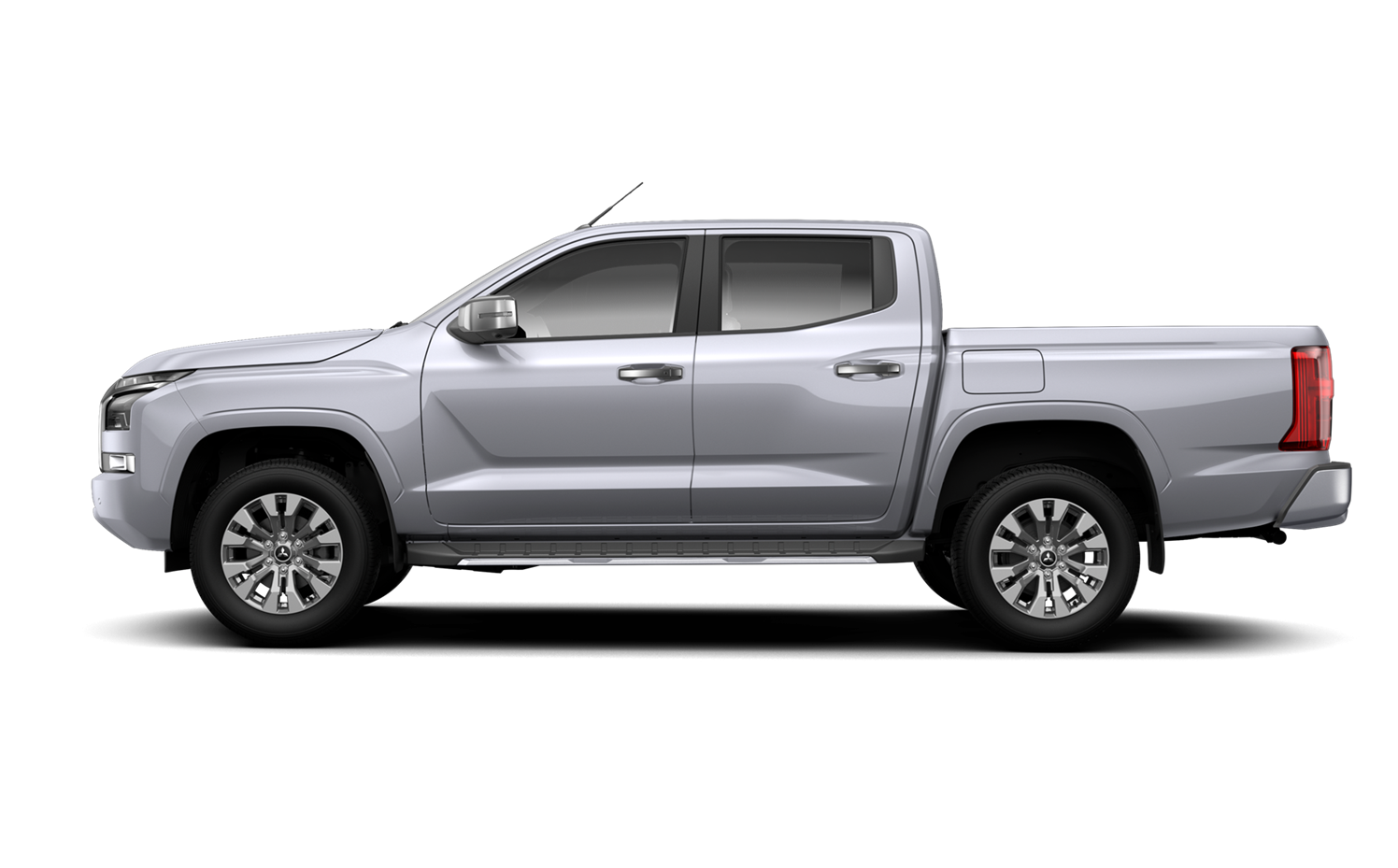
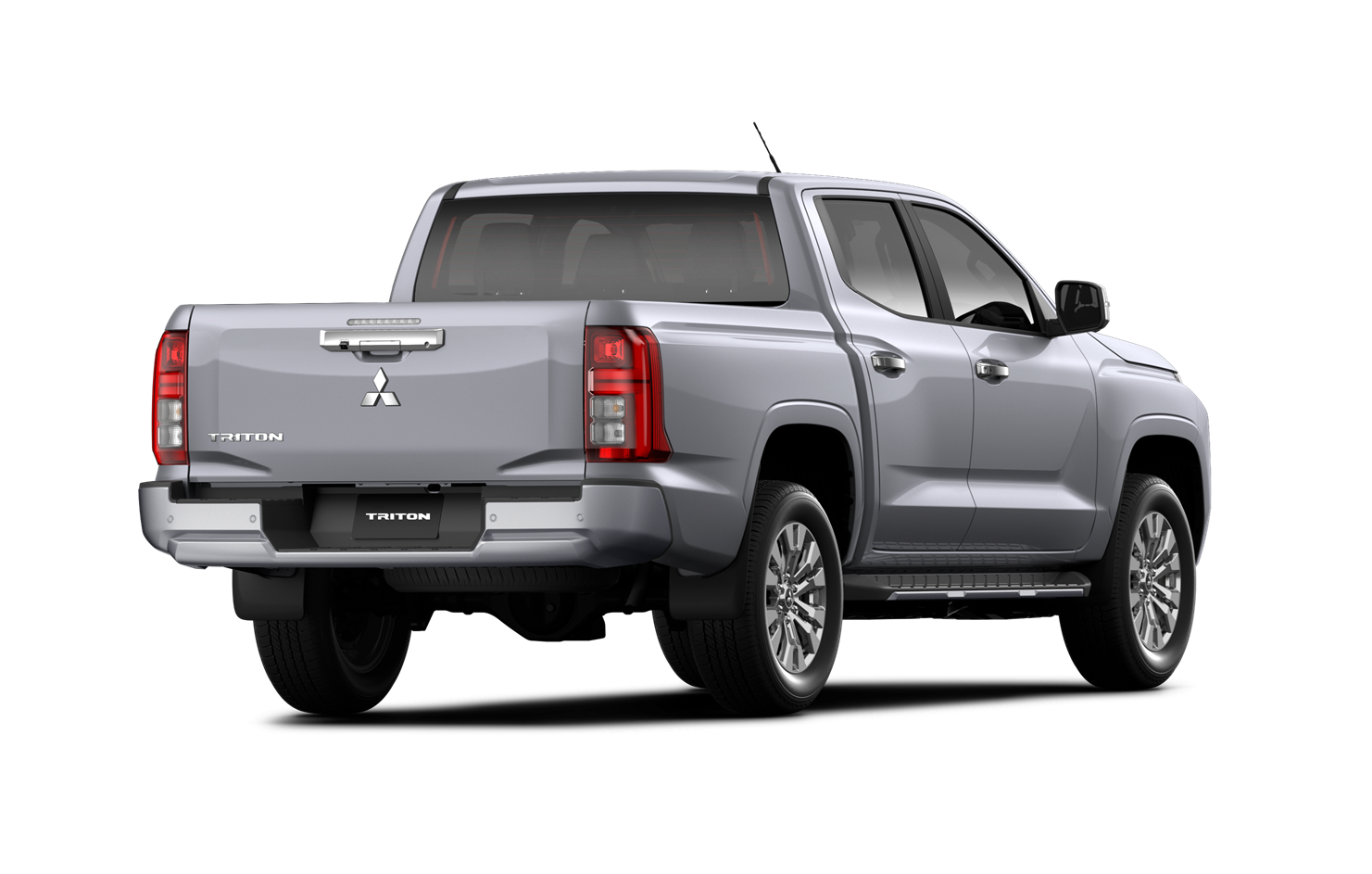
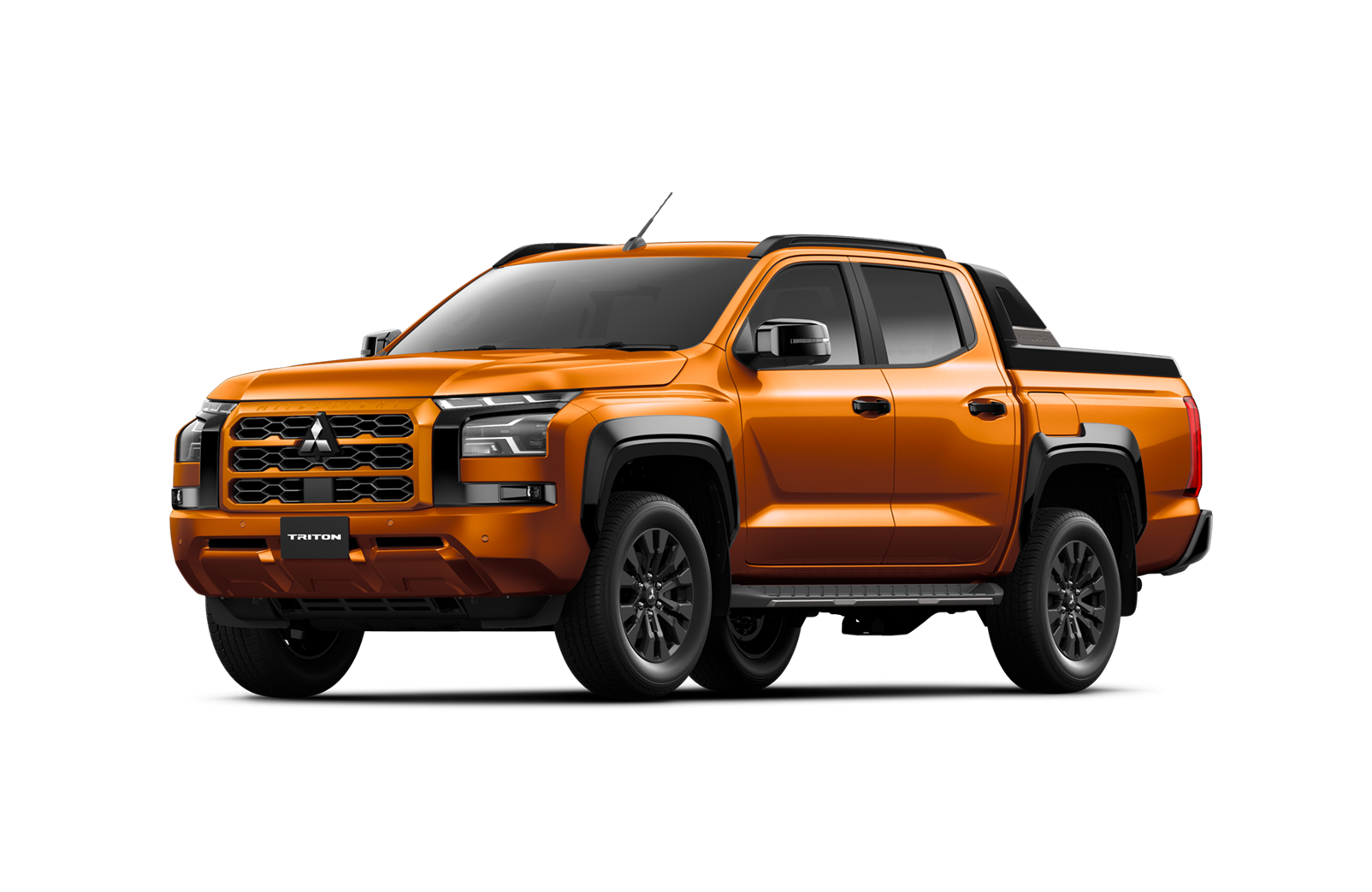
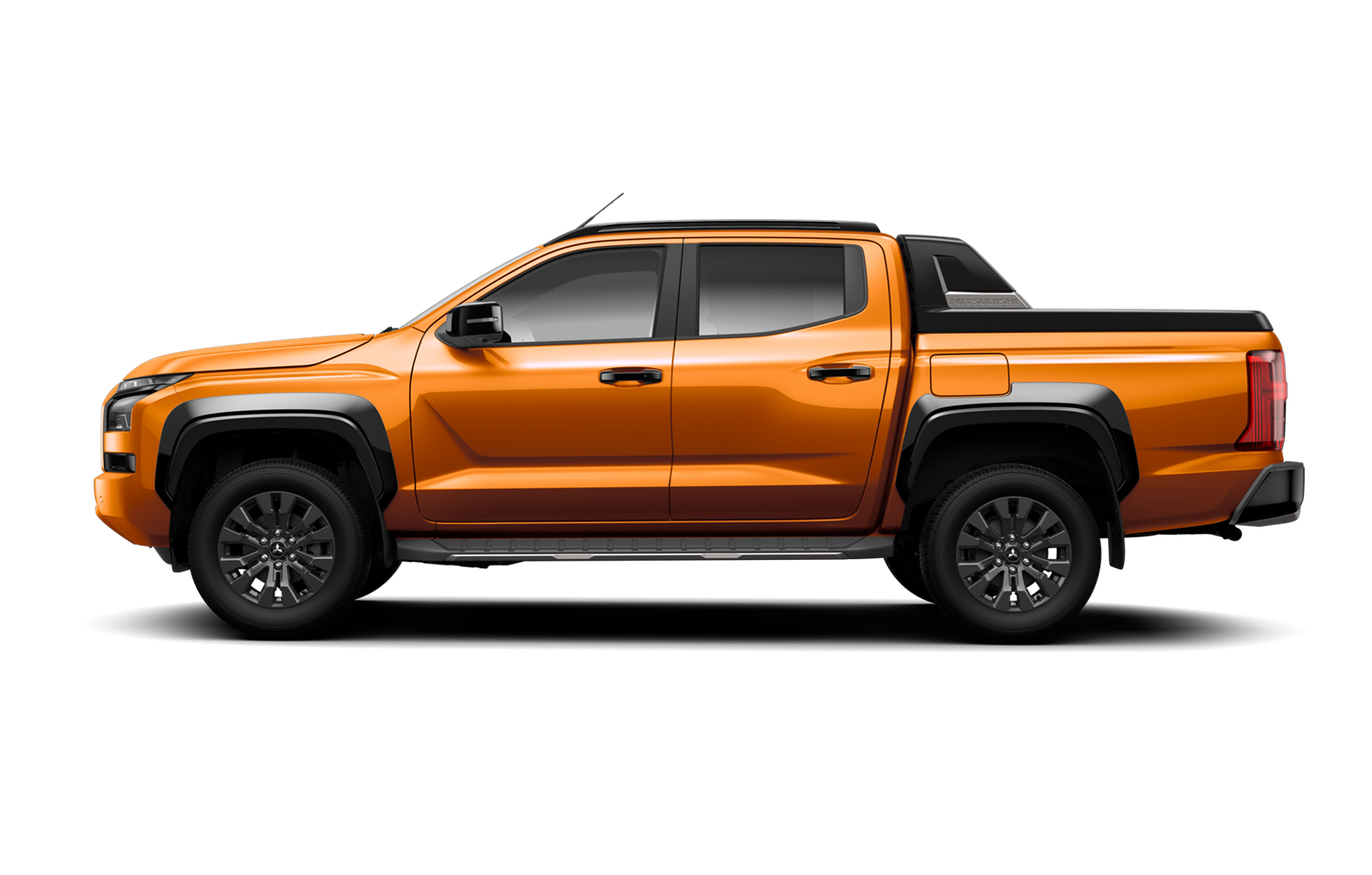
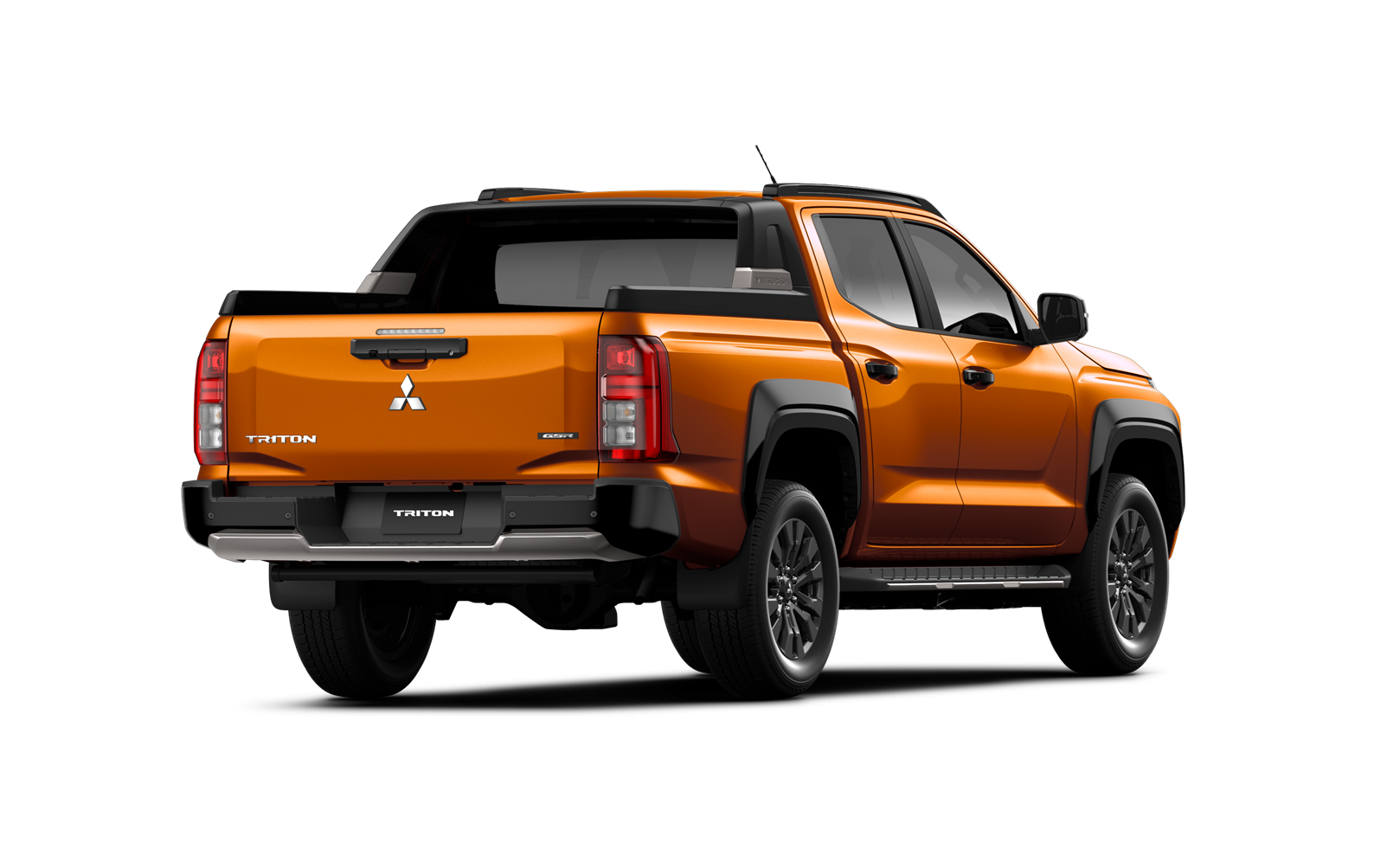

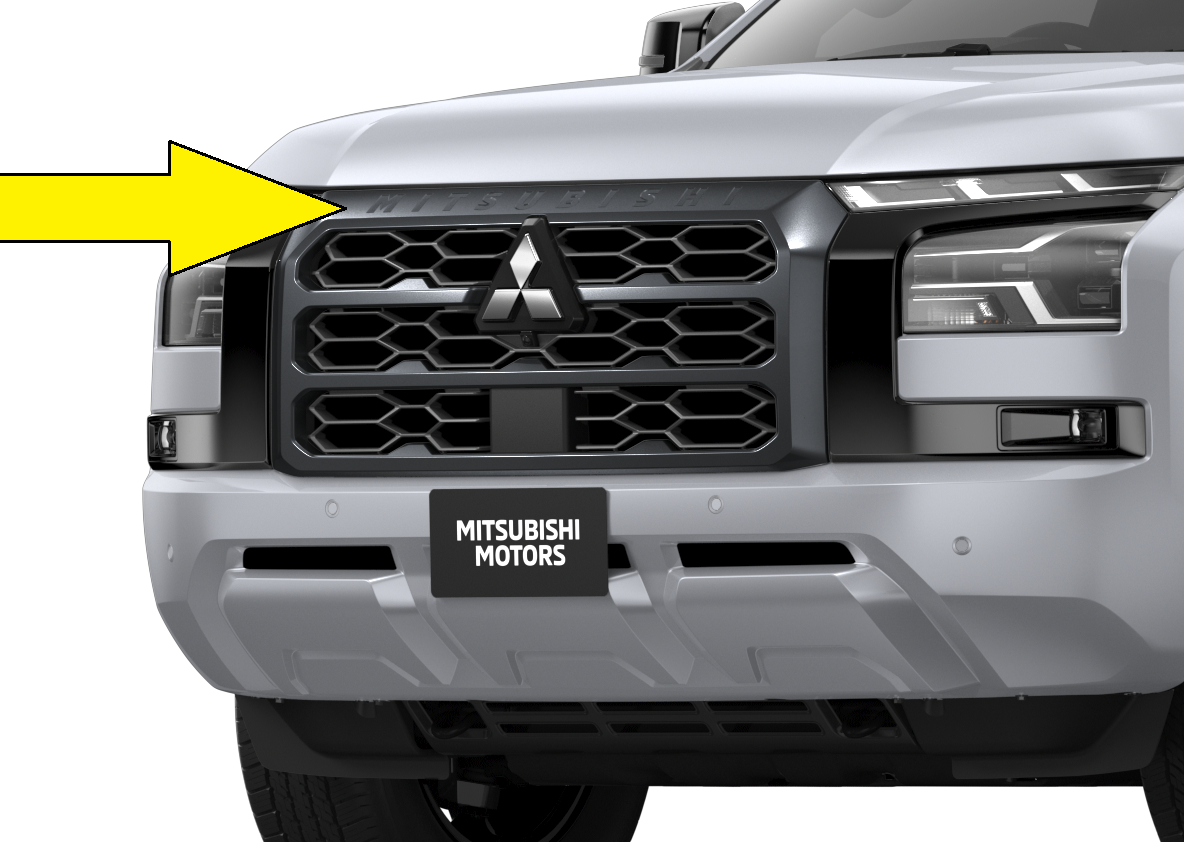
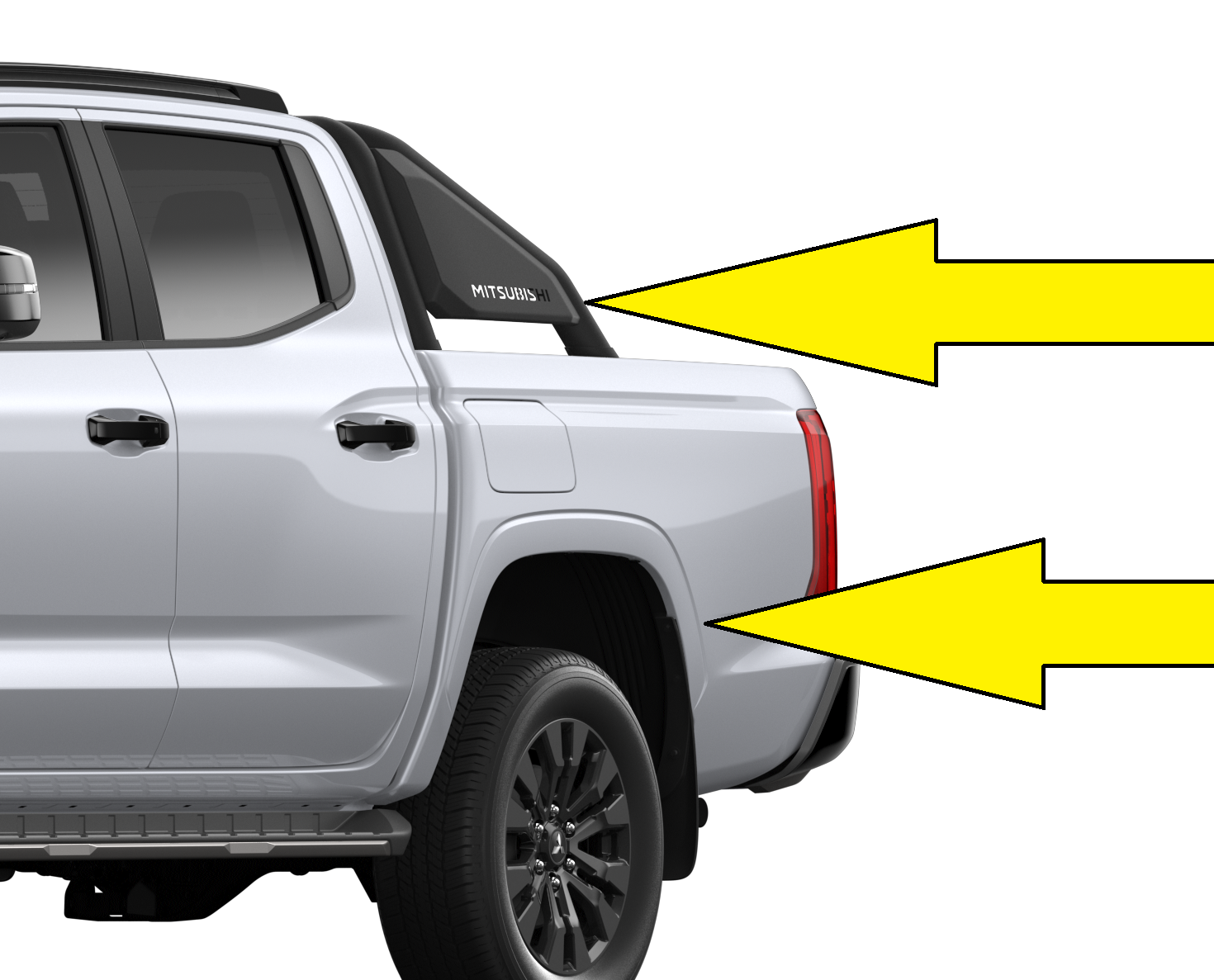
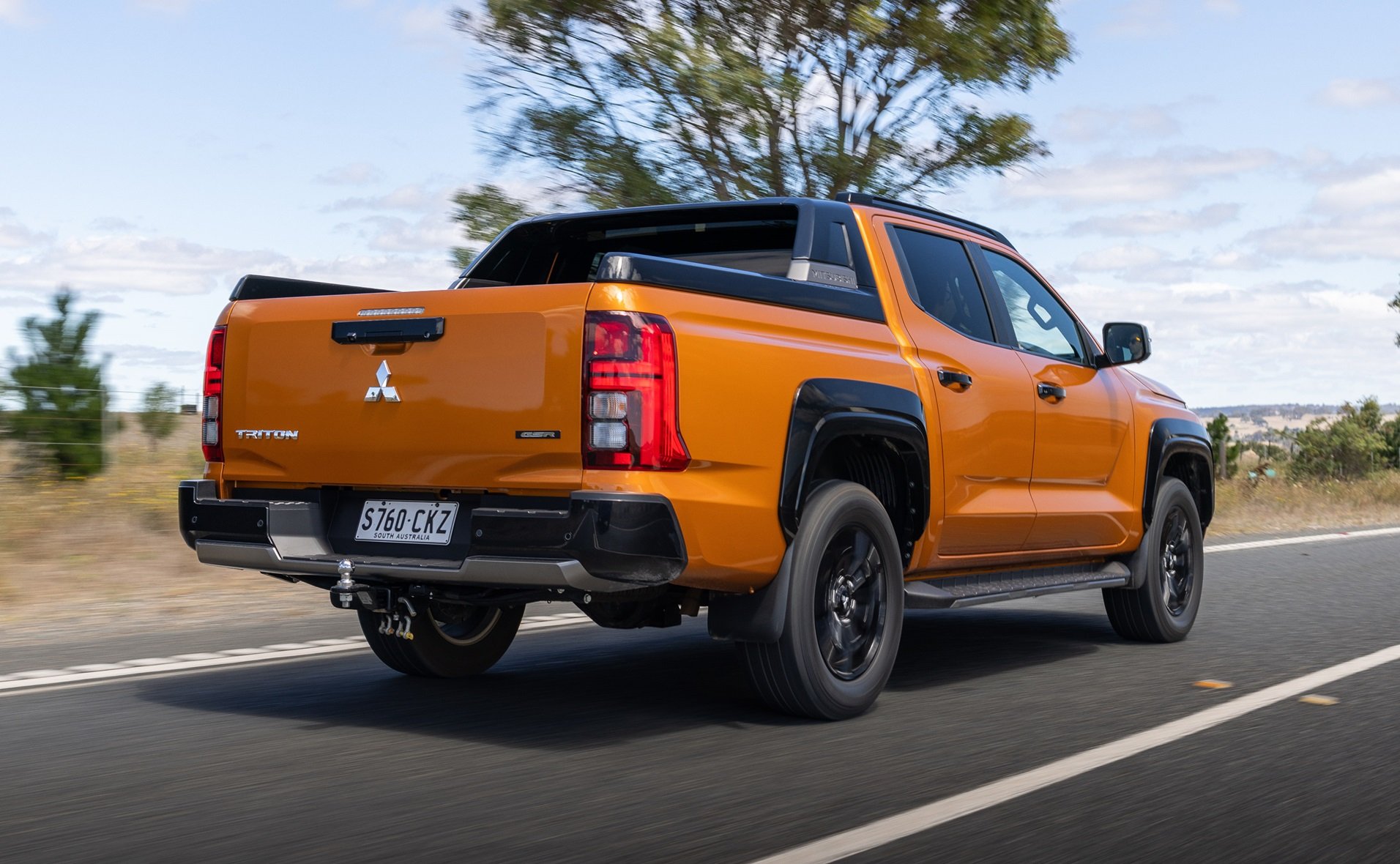

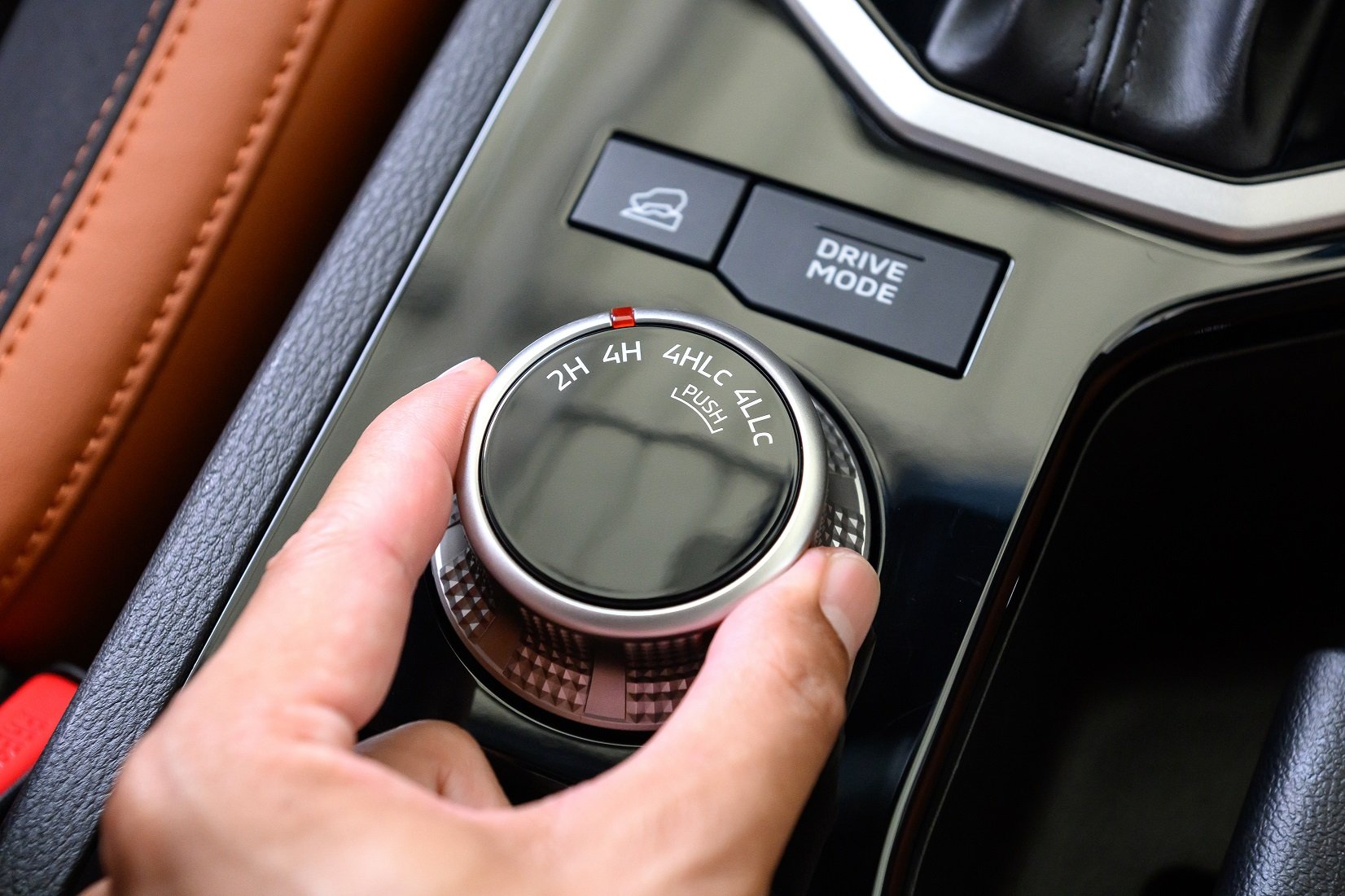

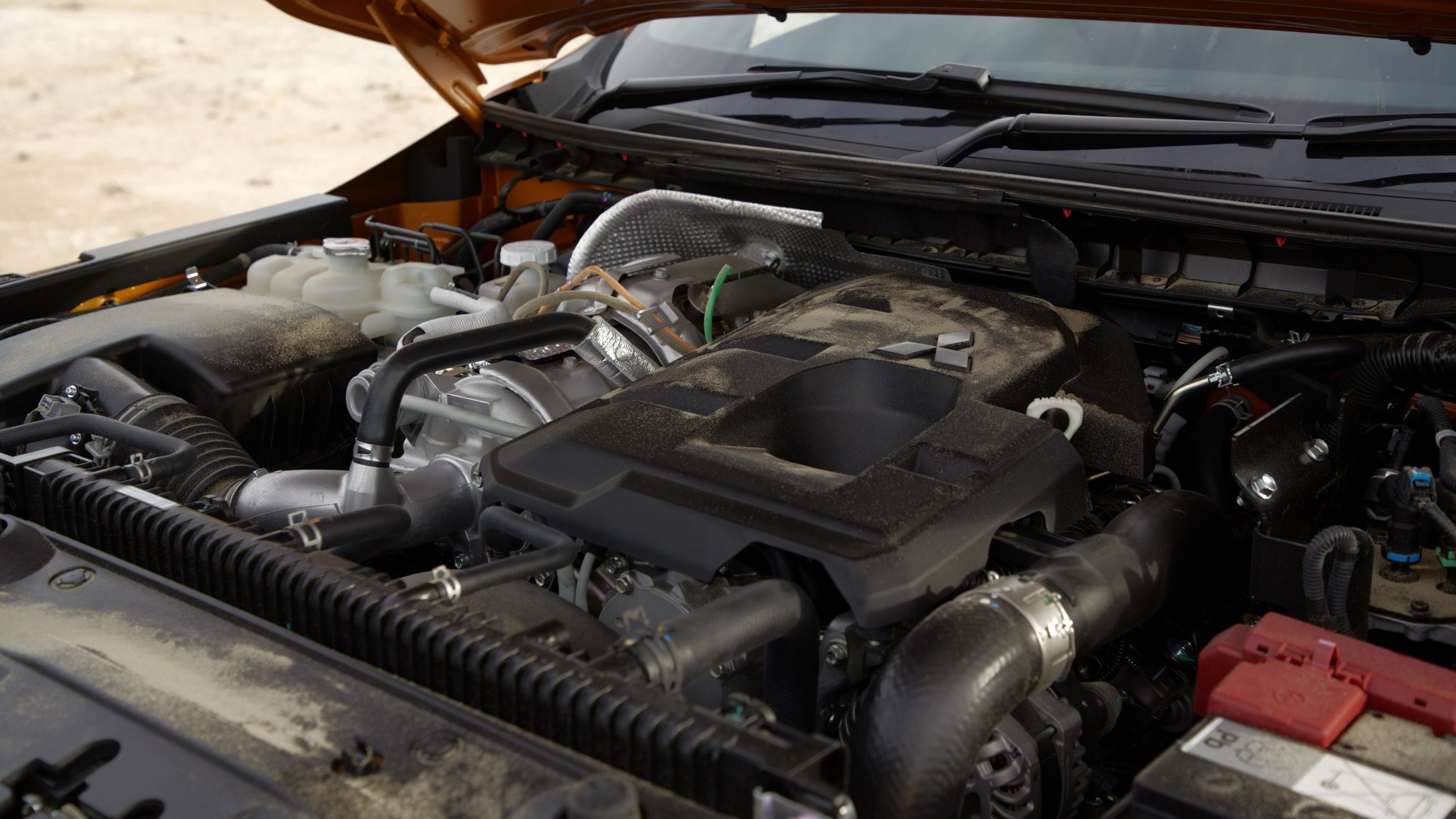
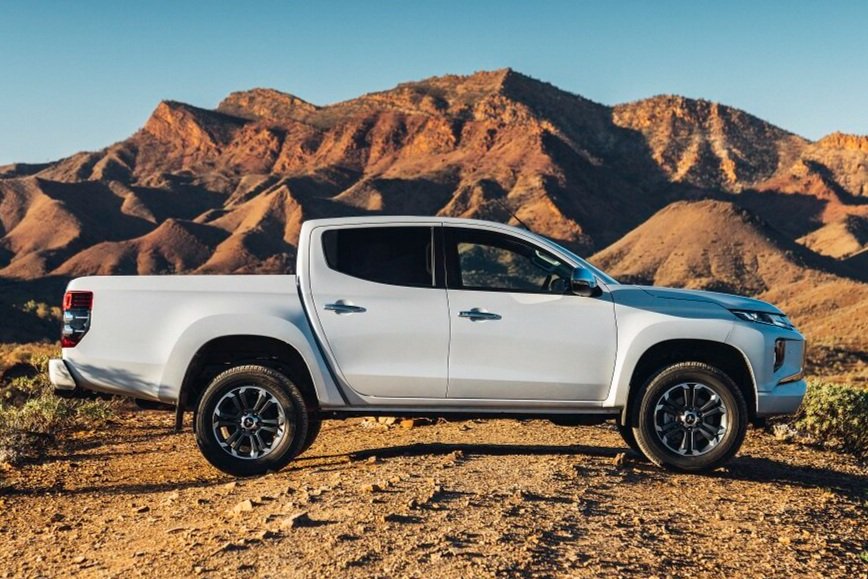
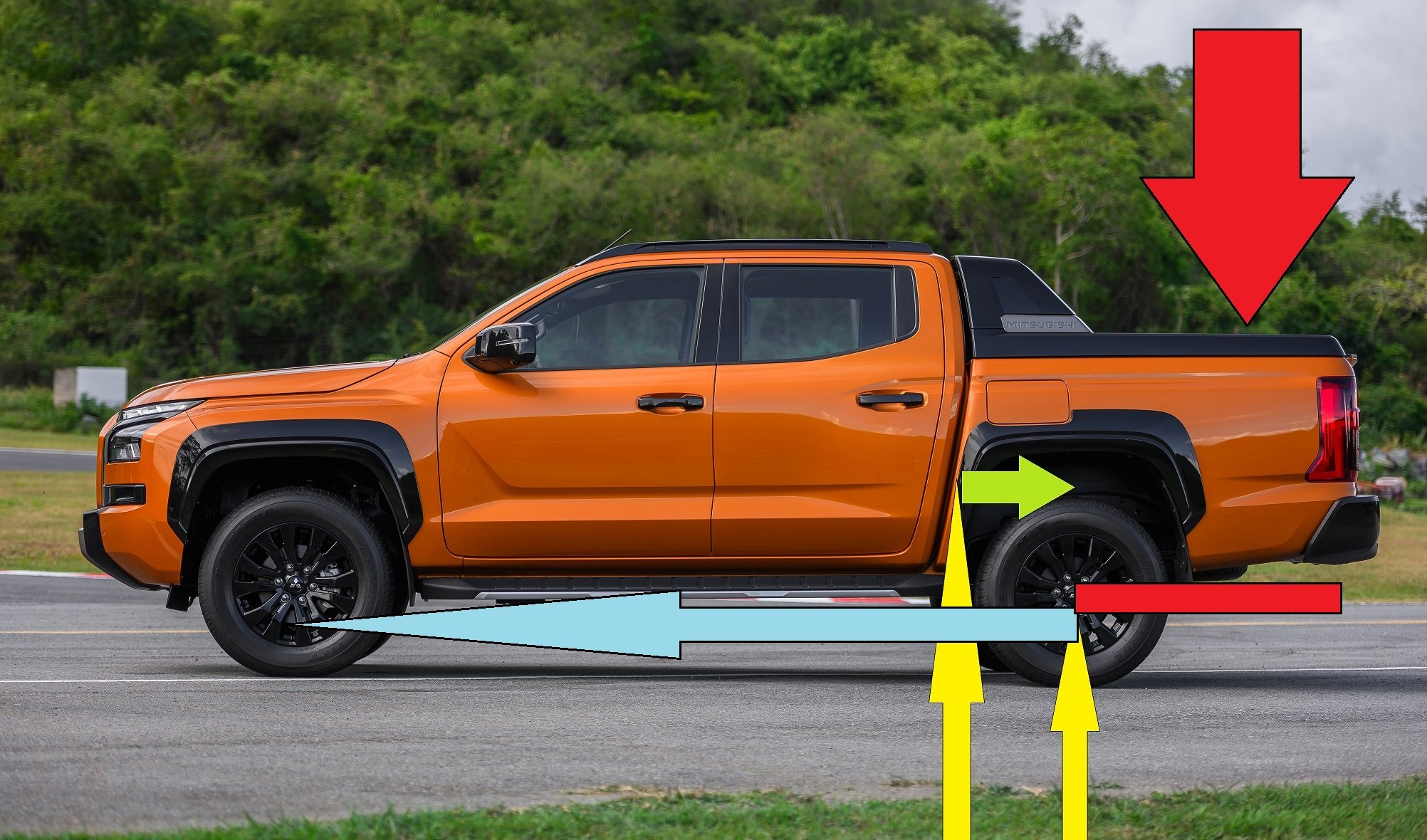
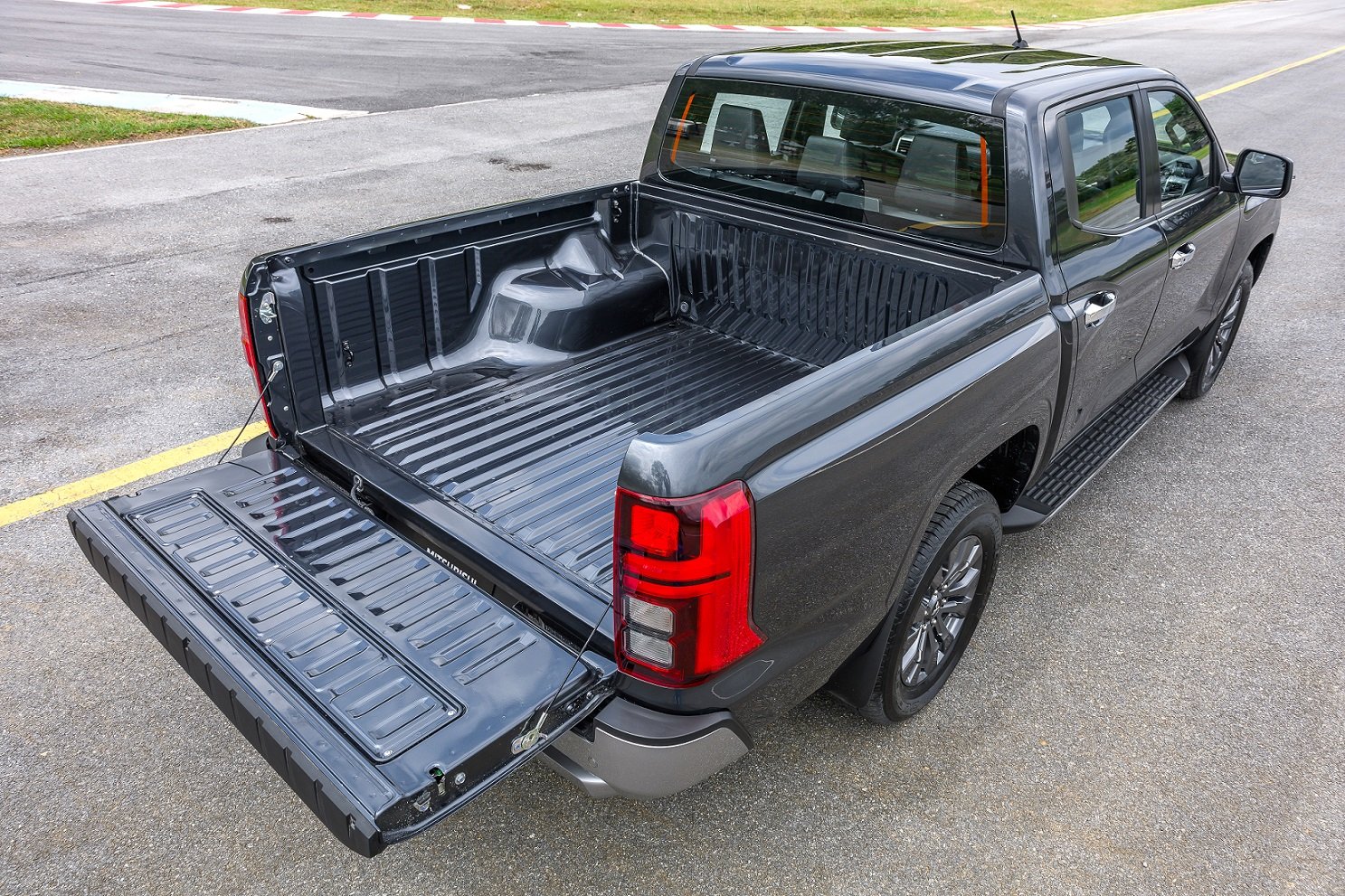











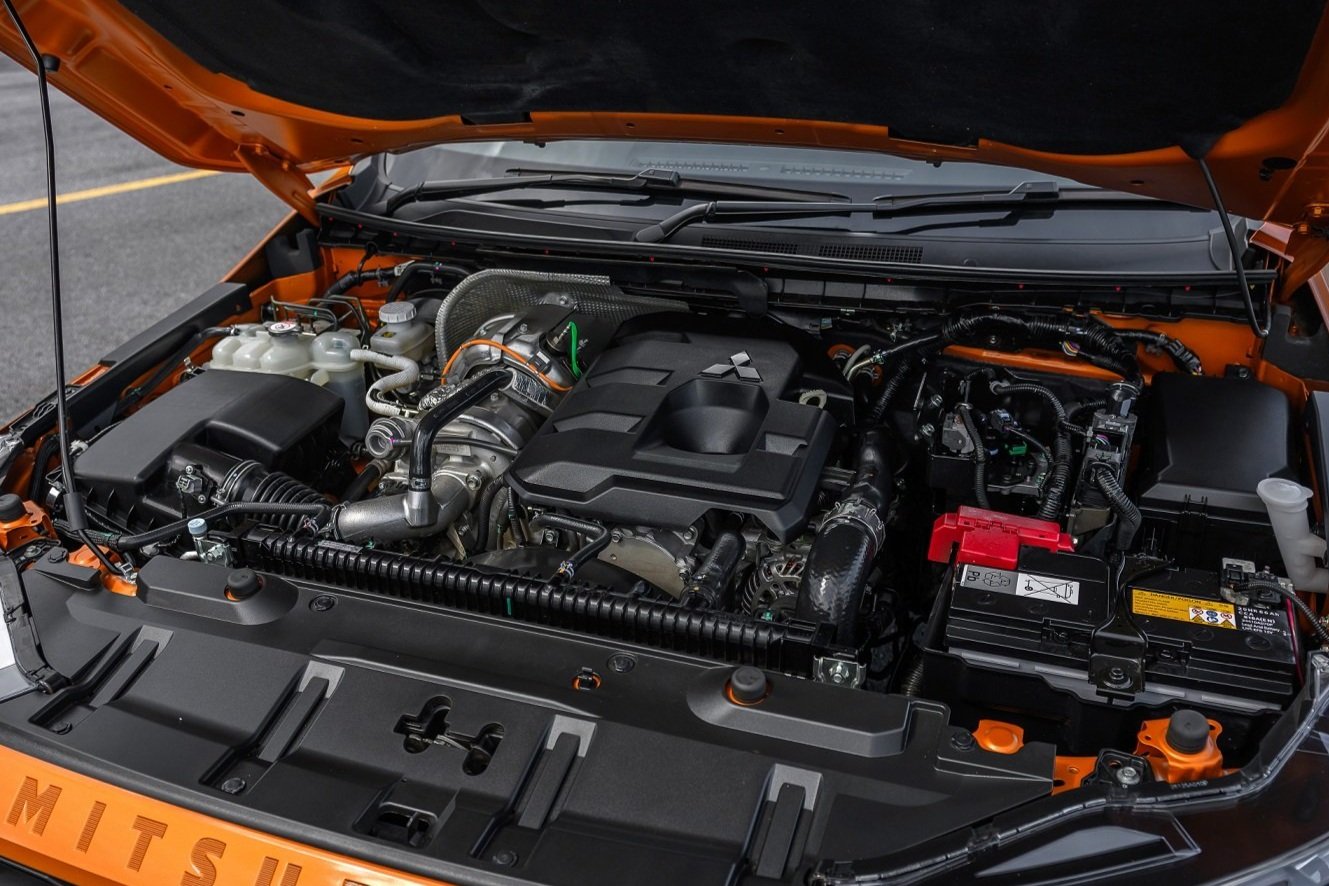
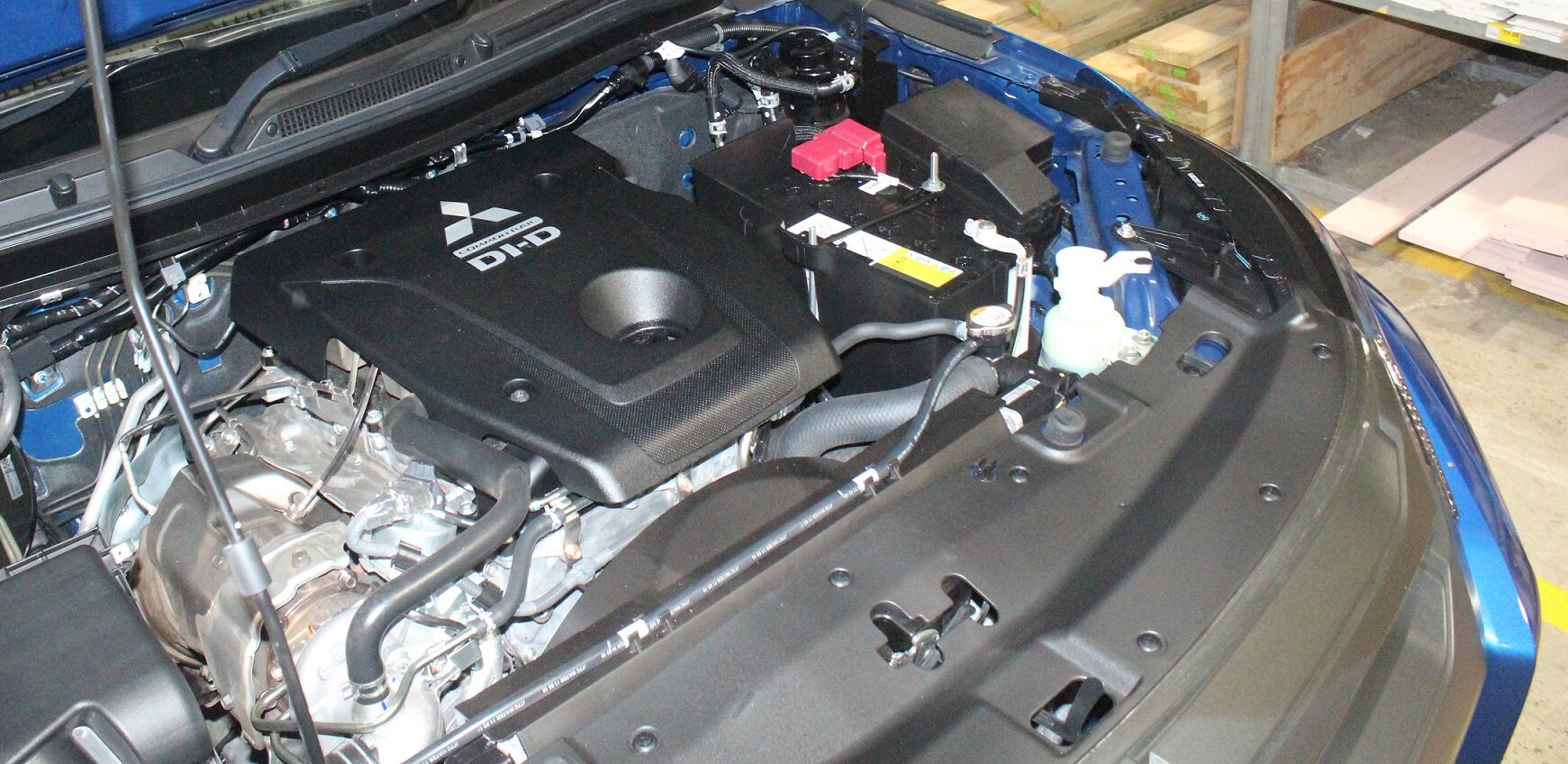


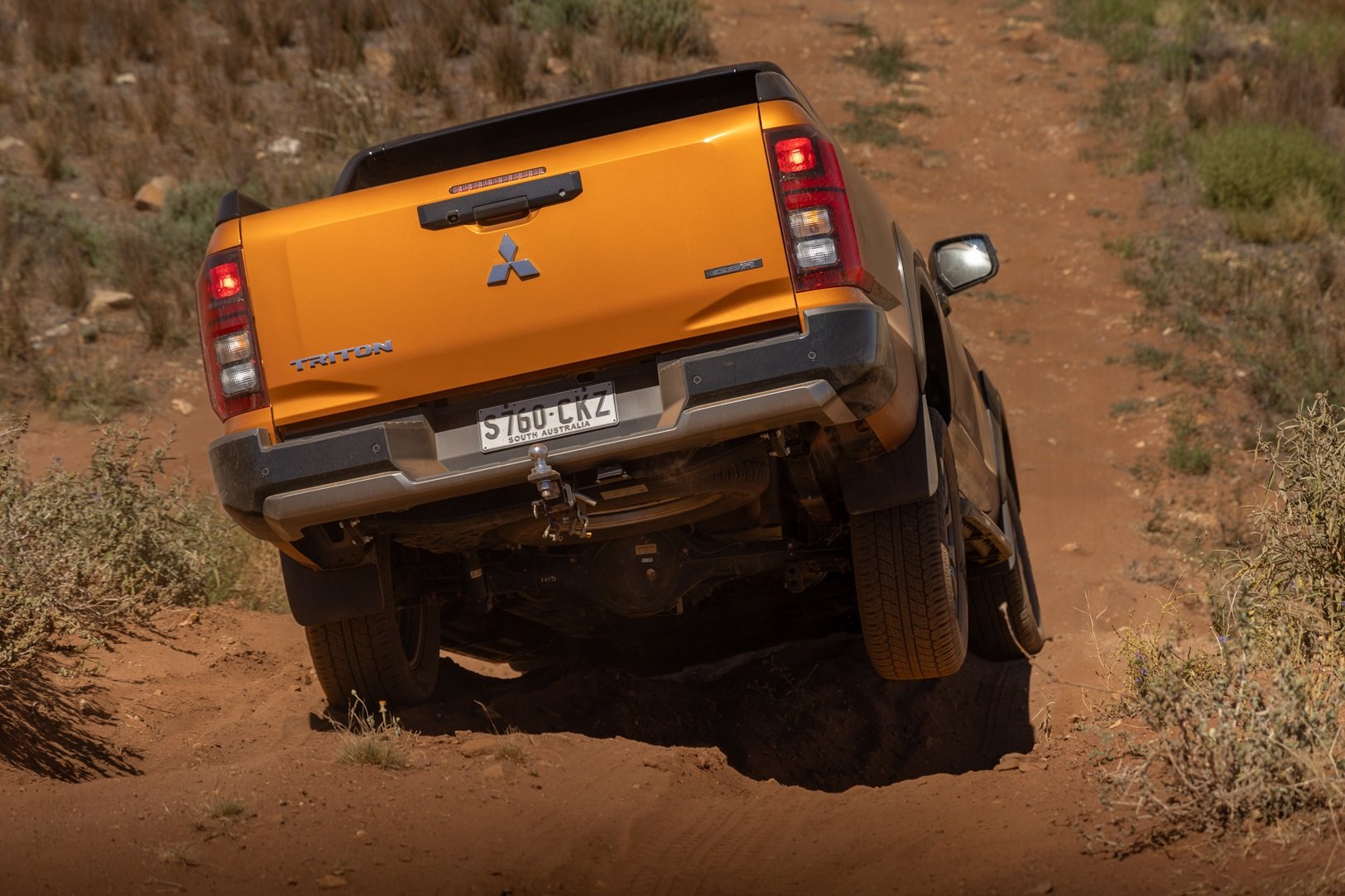

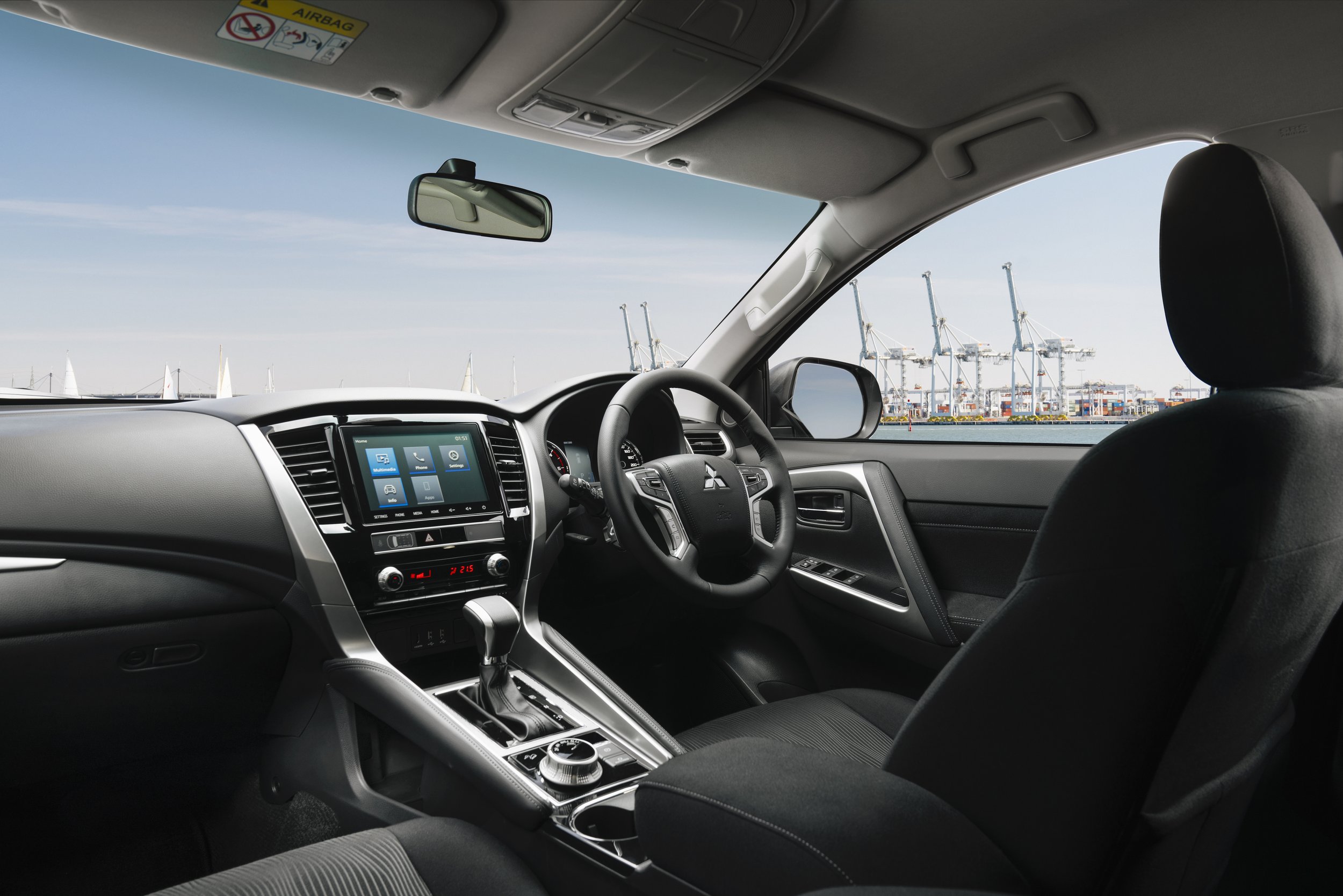
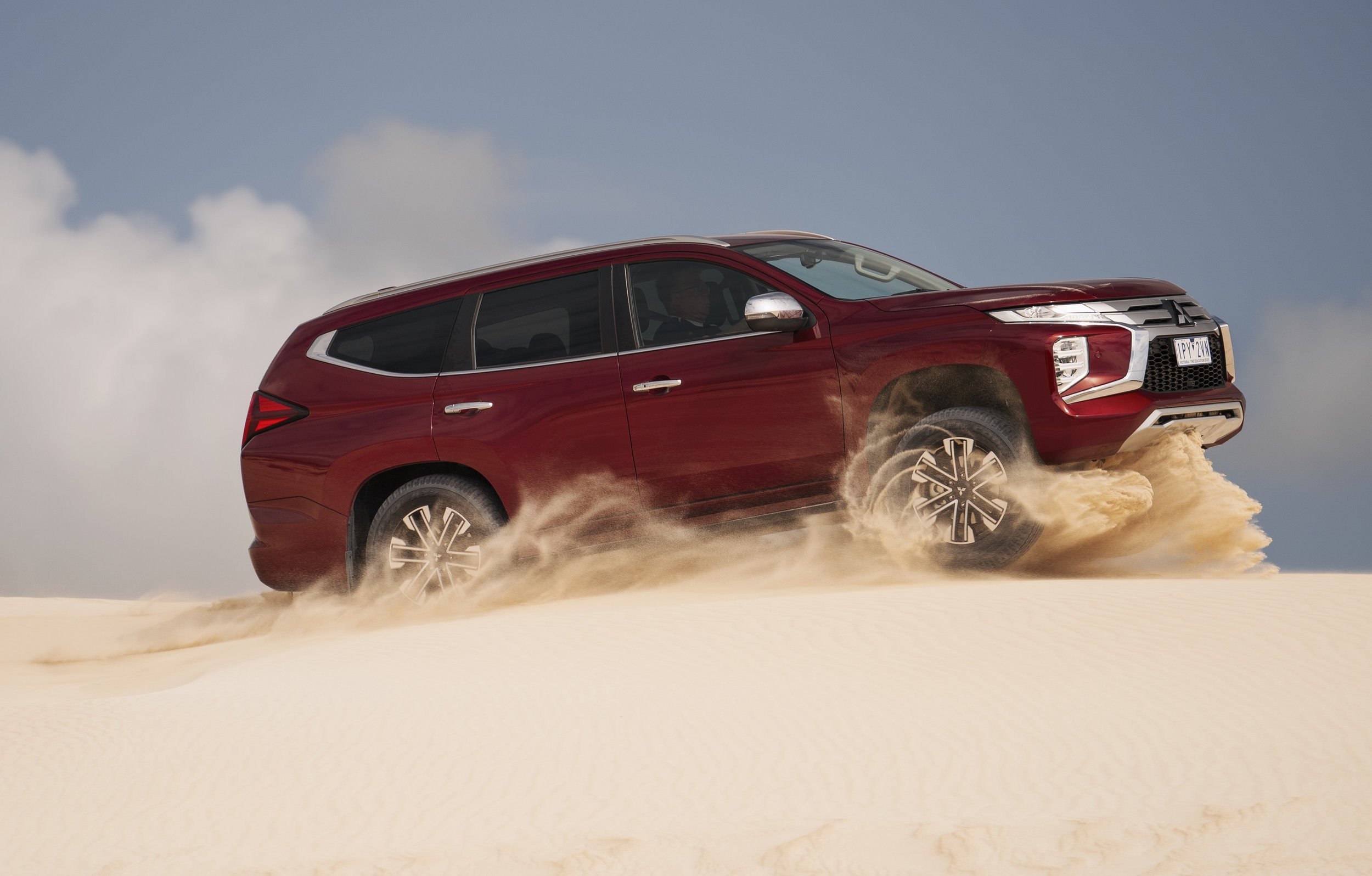
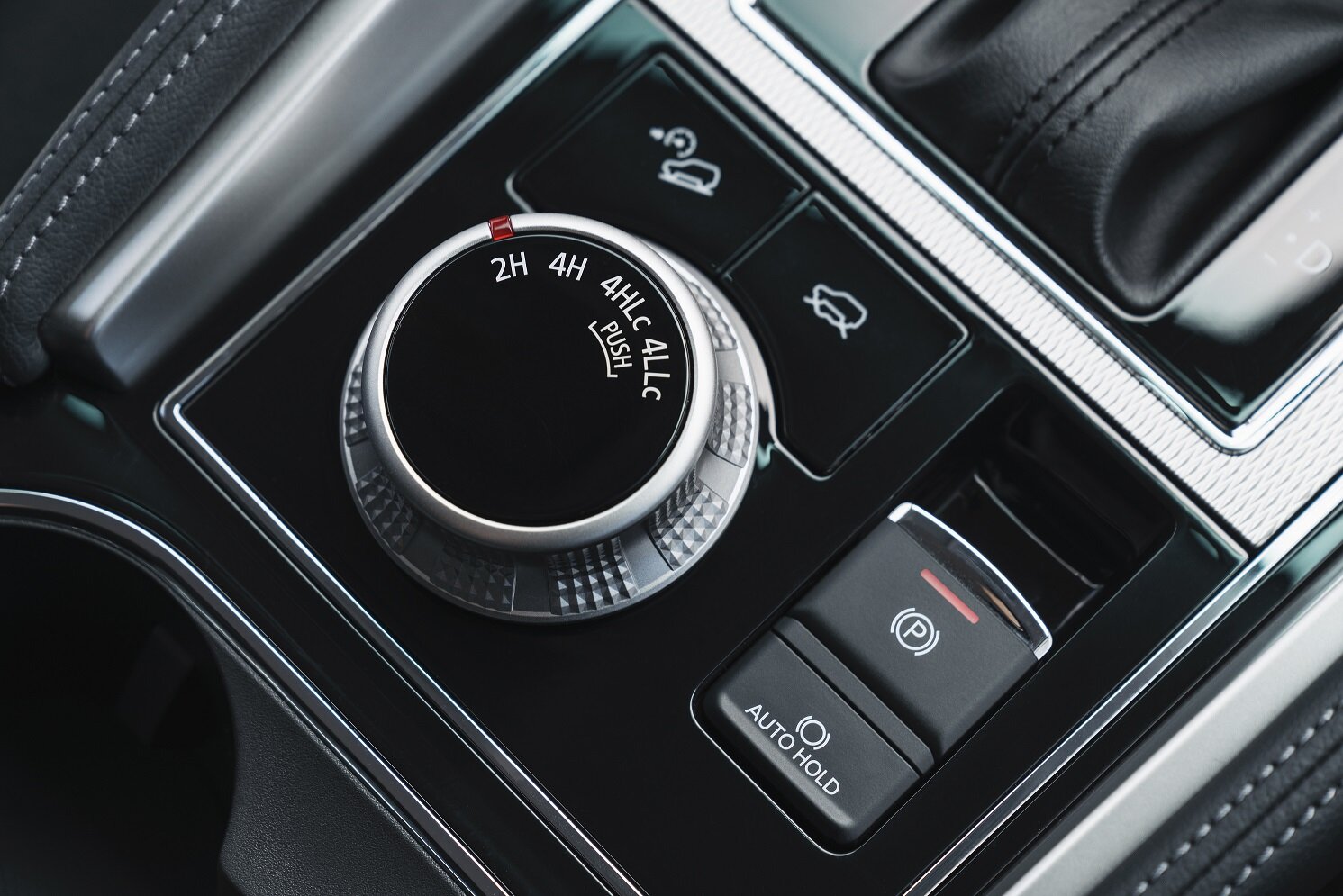


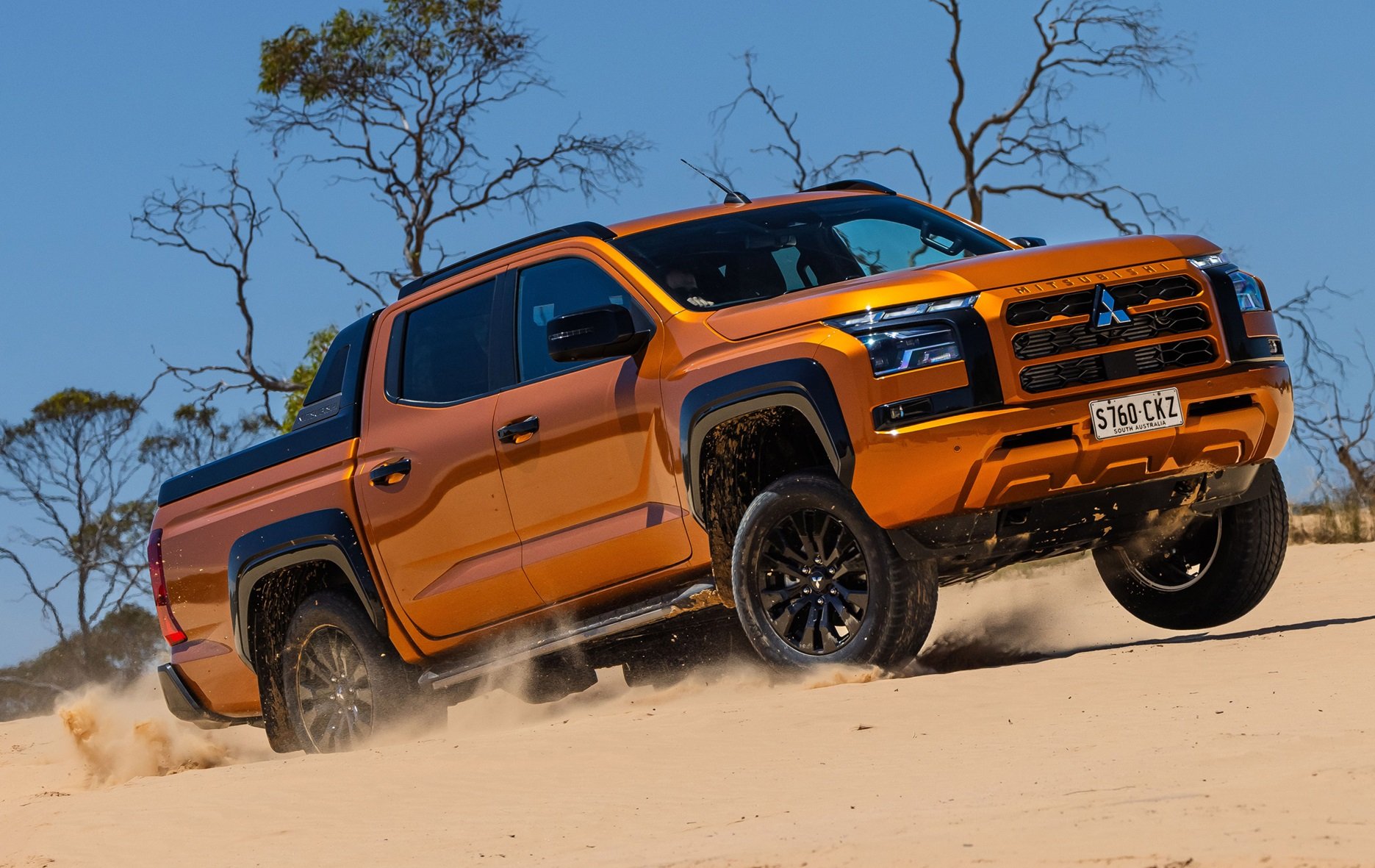
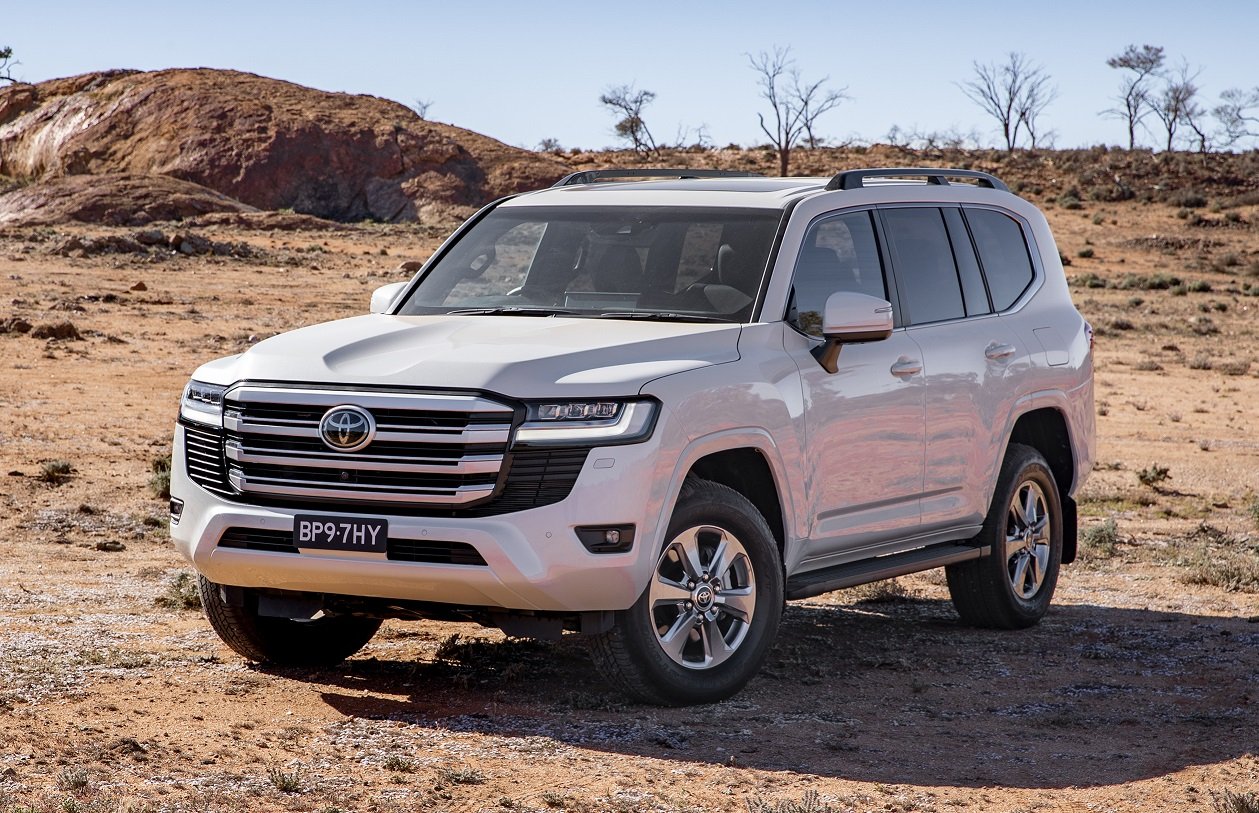




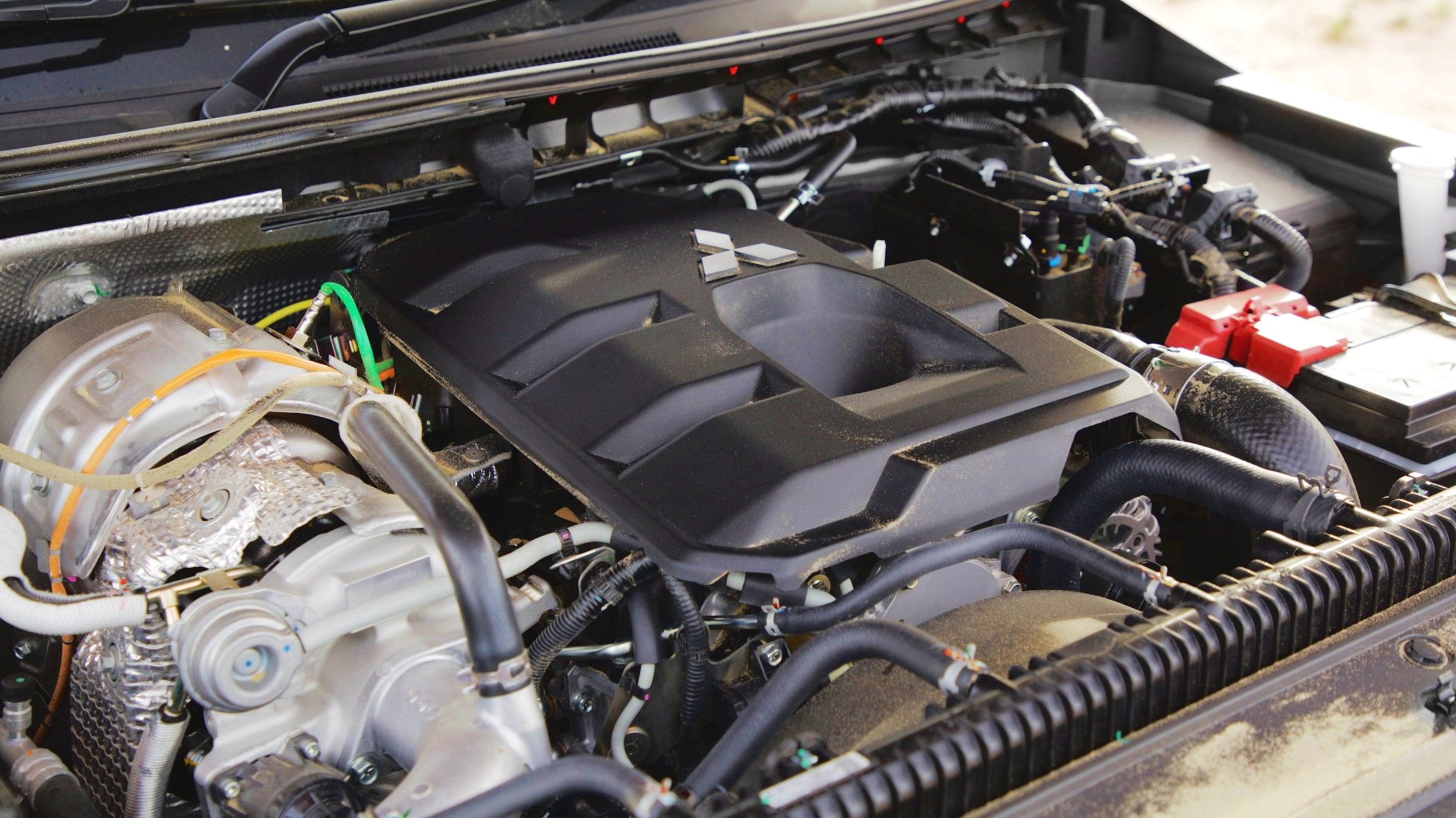

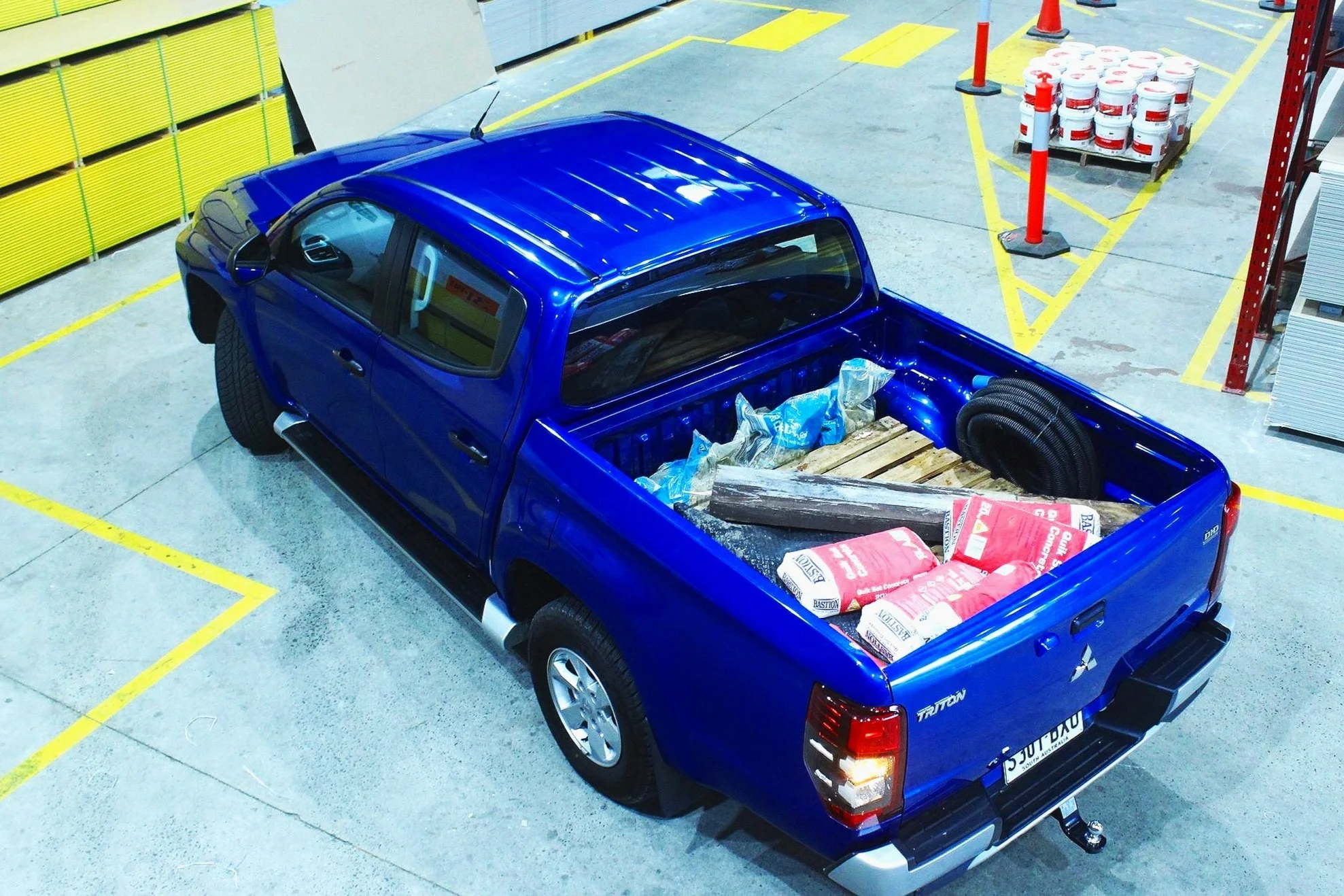

The Nissan Patrol is a proven, rugged 4X4 wagon with pedigree, seven seats and a grunty, reliable engine. Buying a V8 Patrol will save you more than 20 grand compared with a LandCruiser.